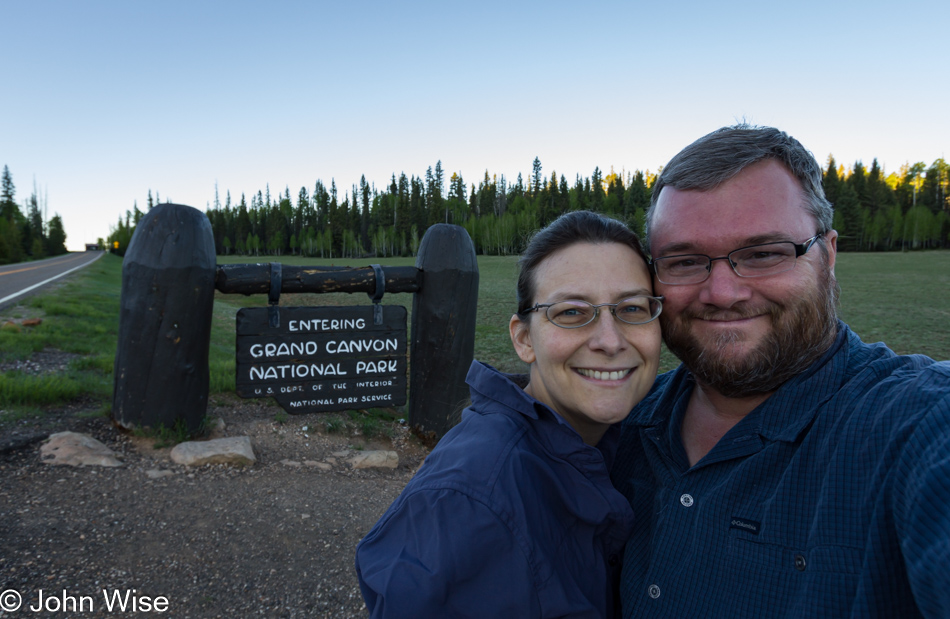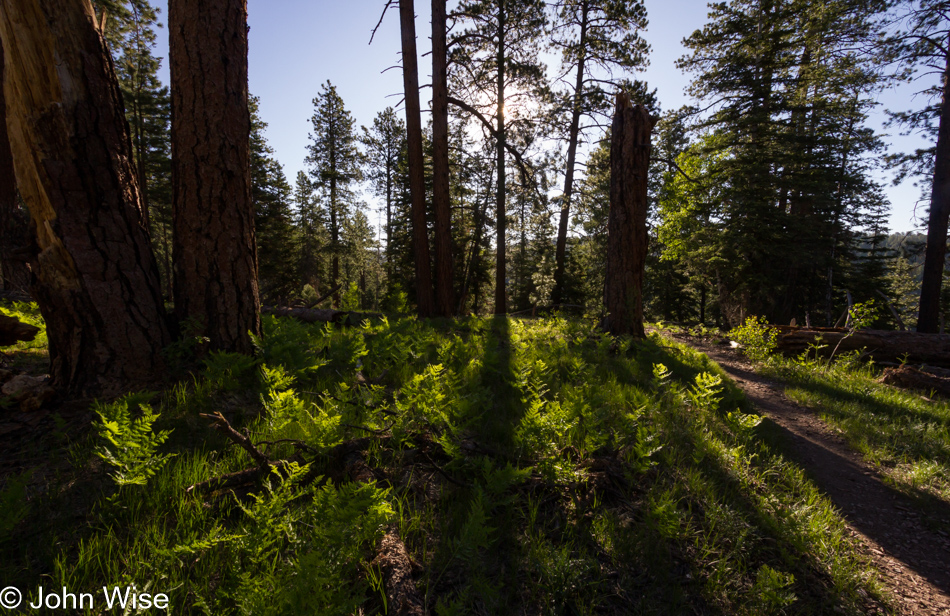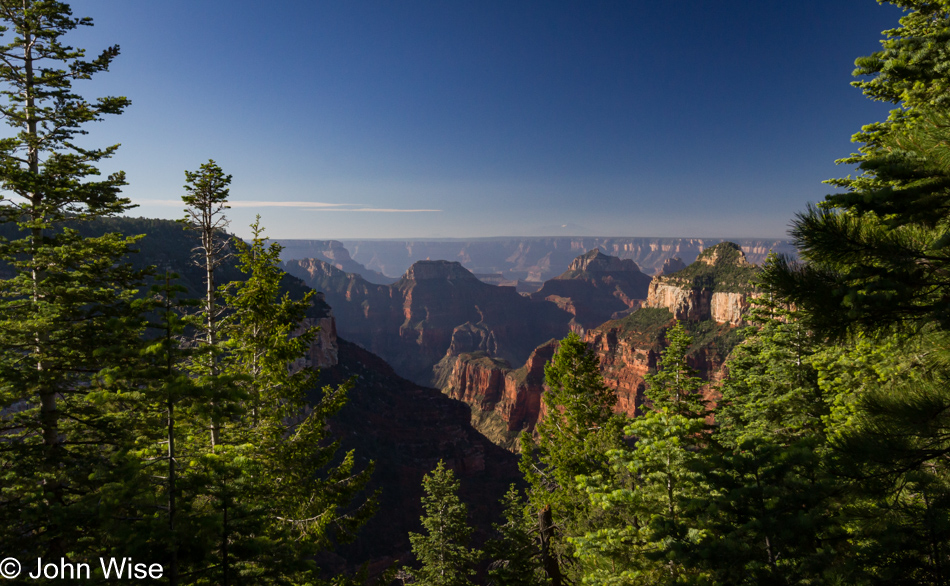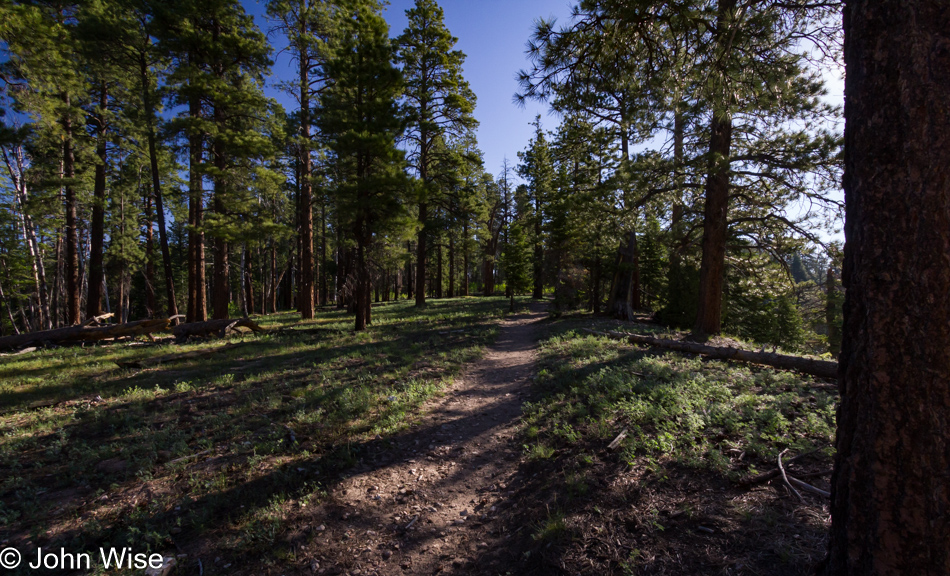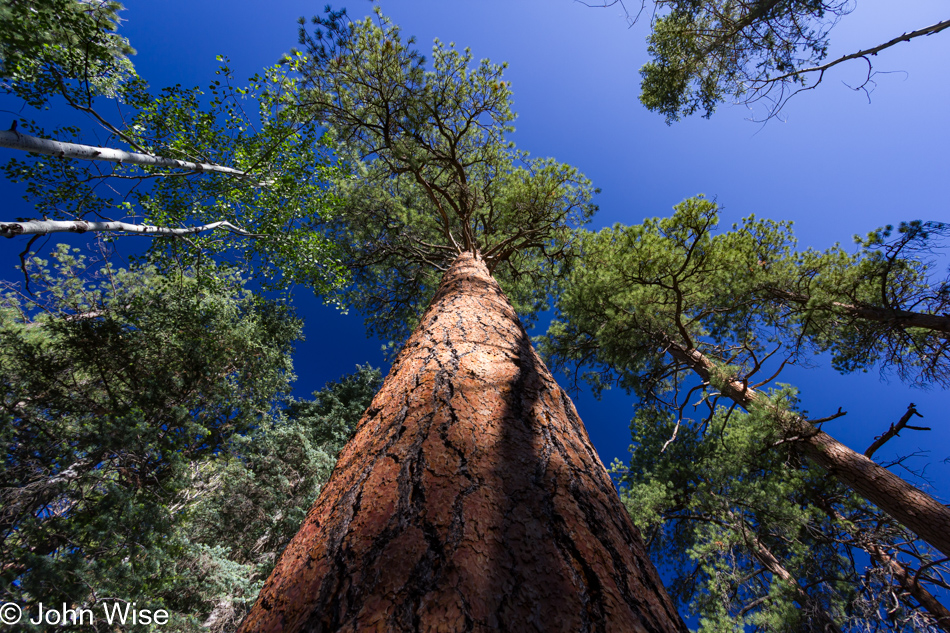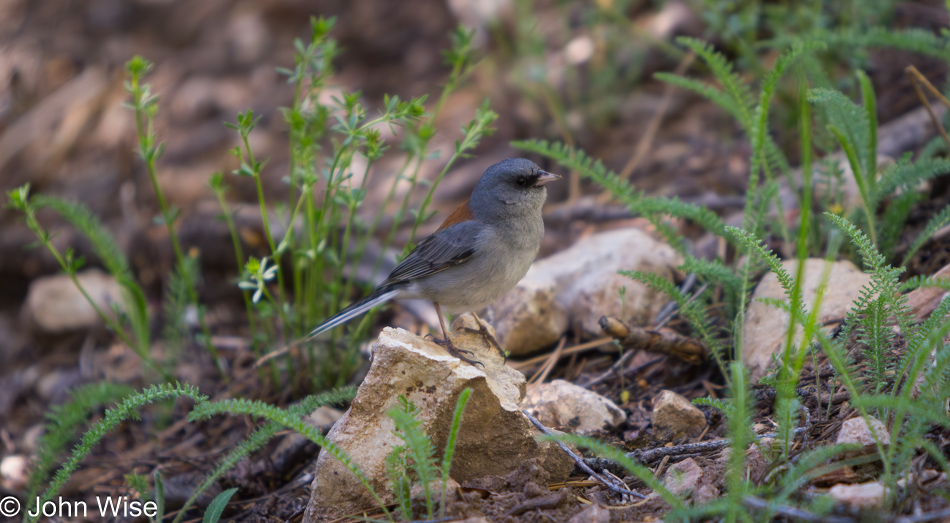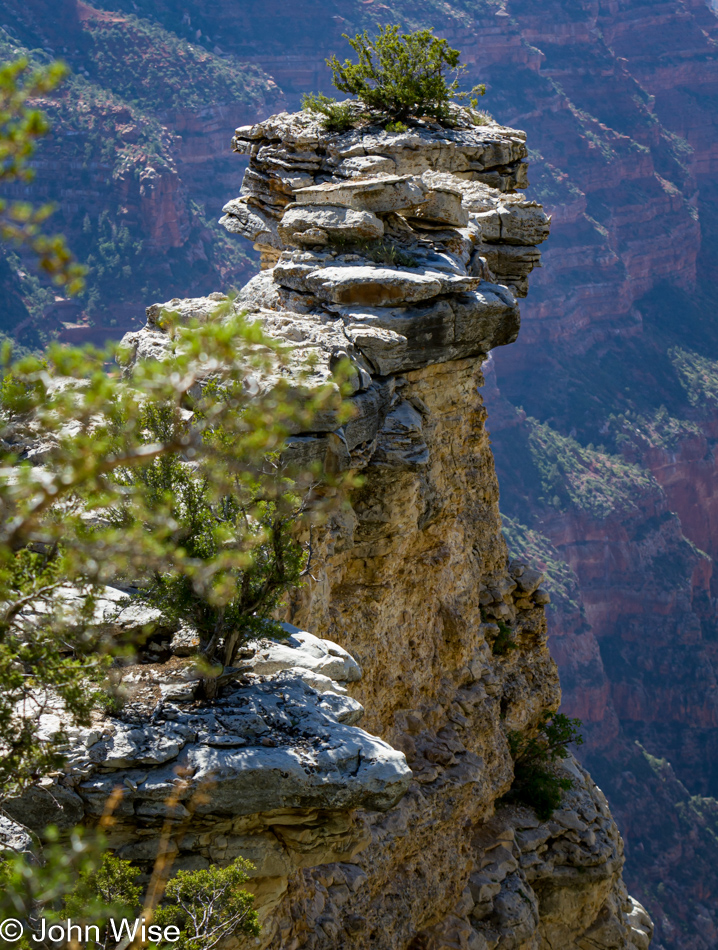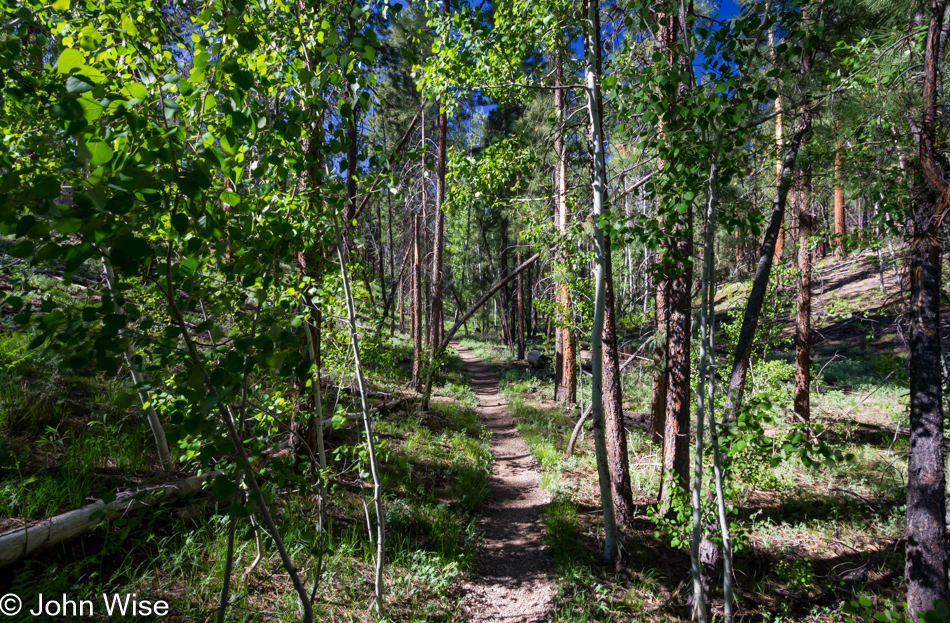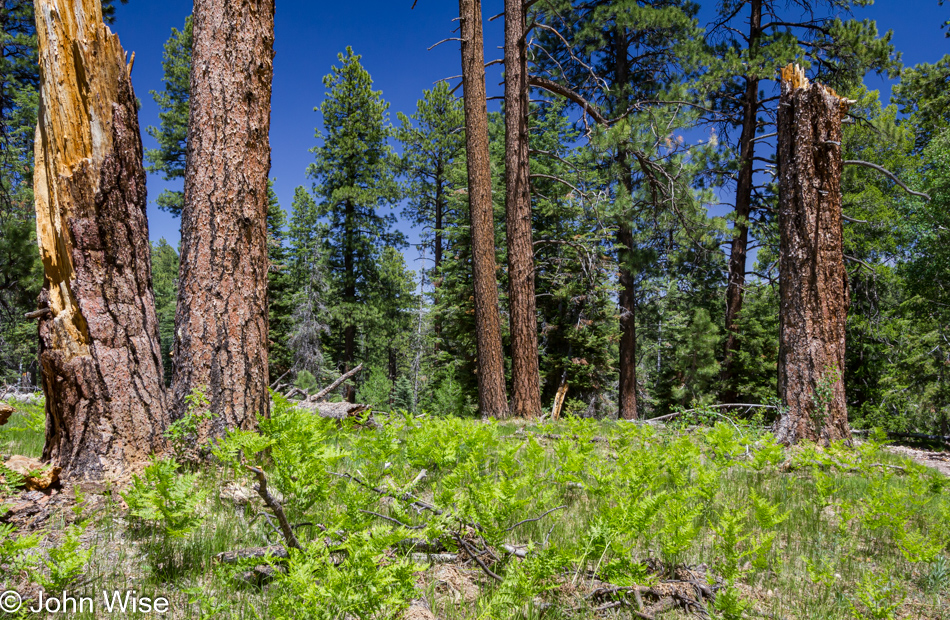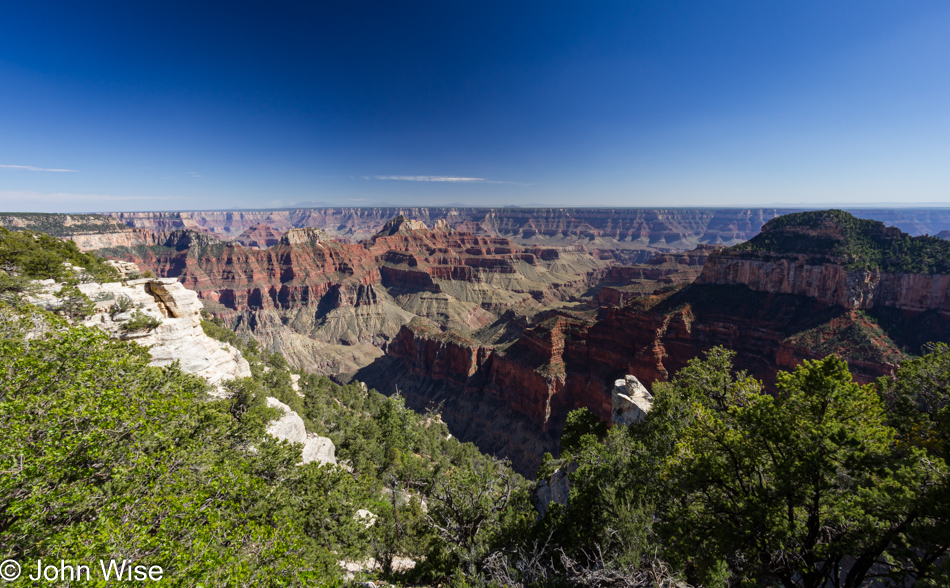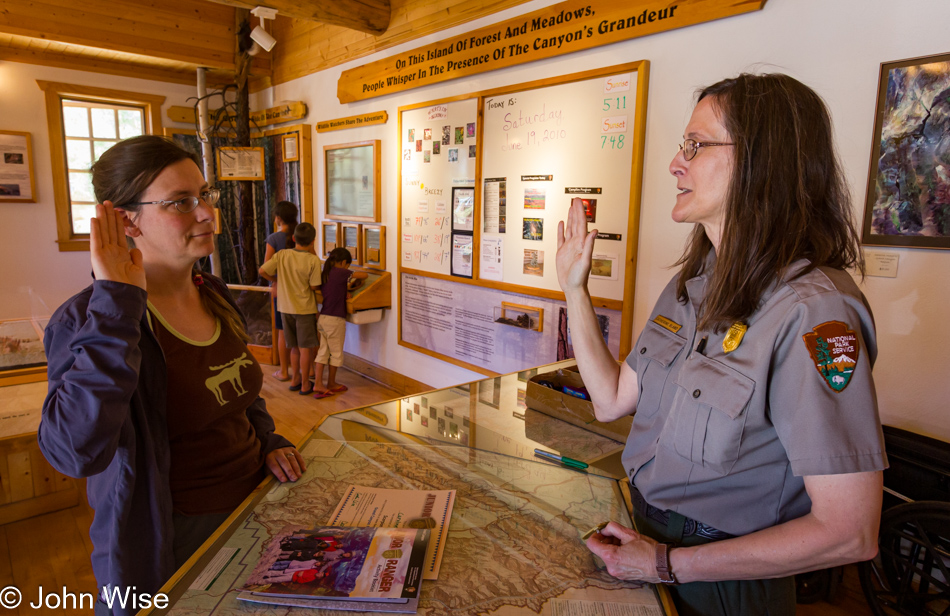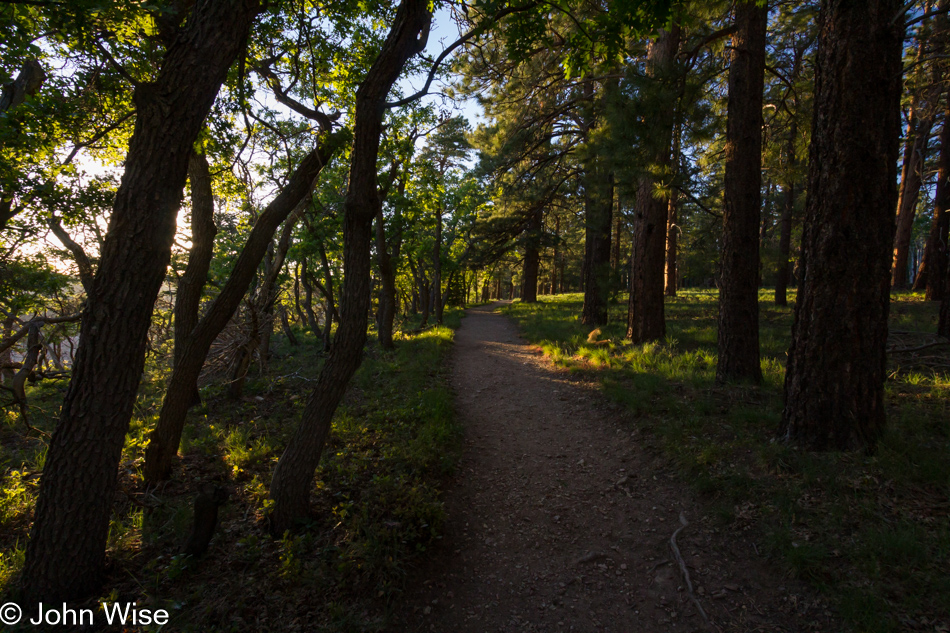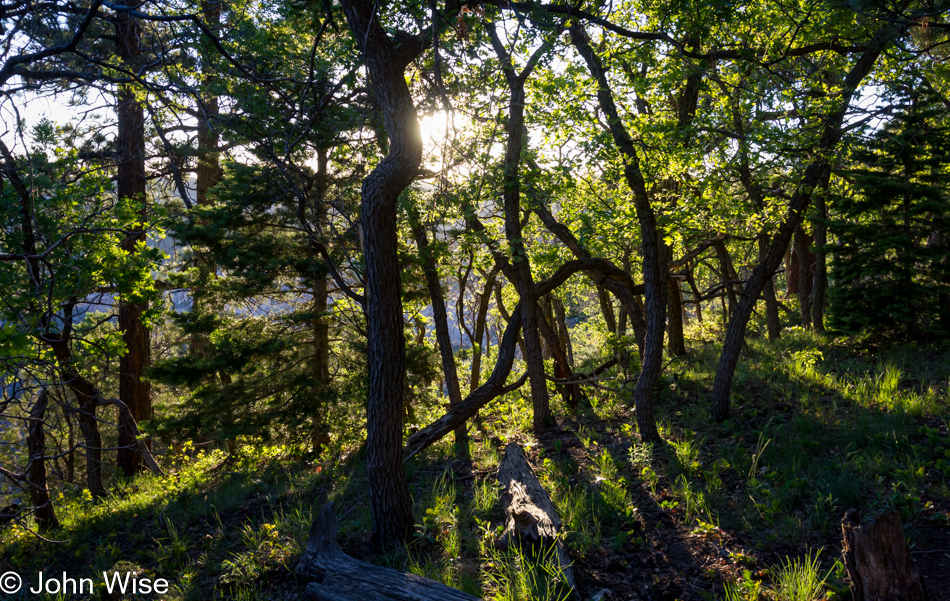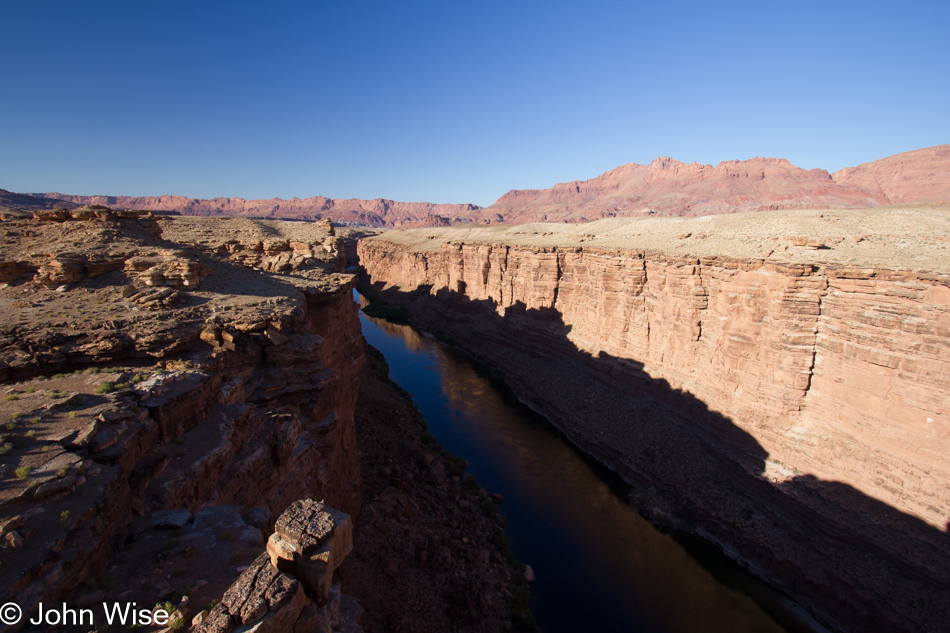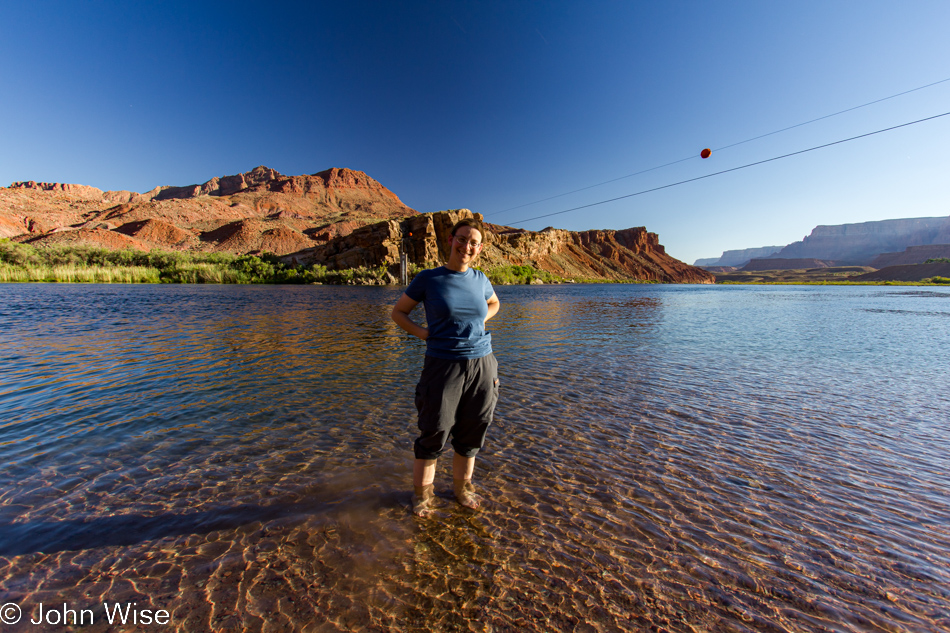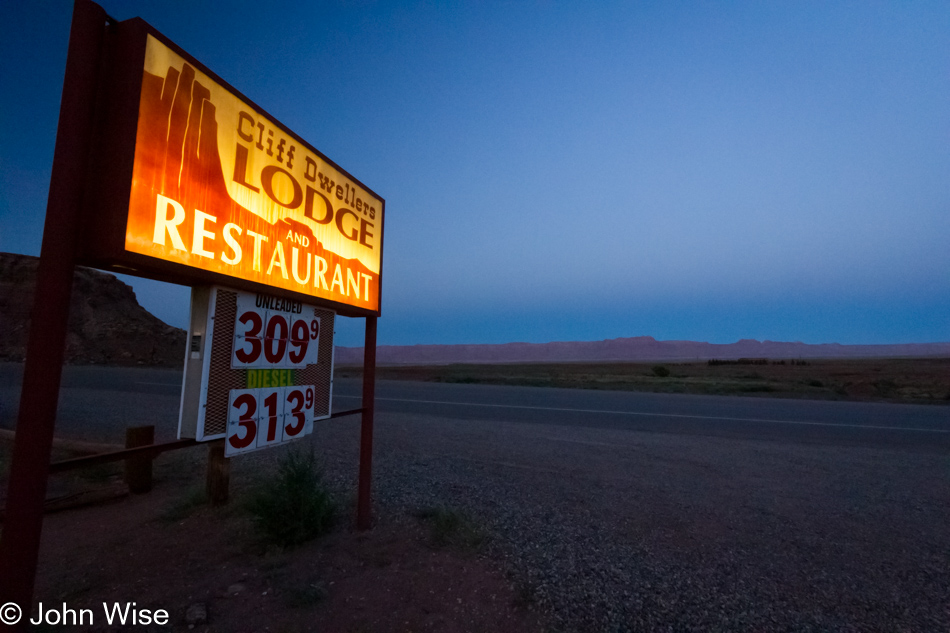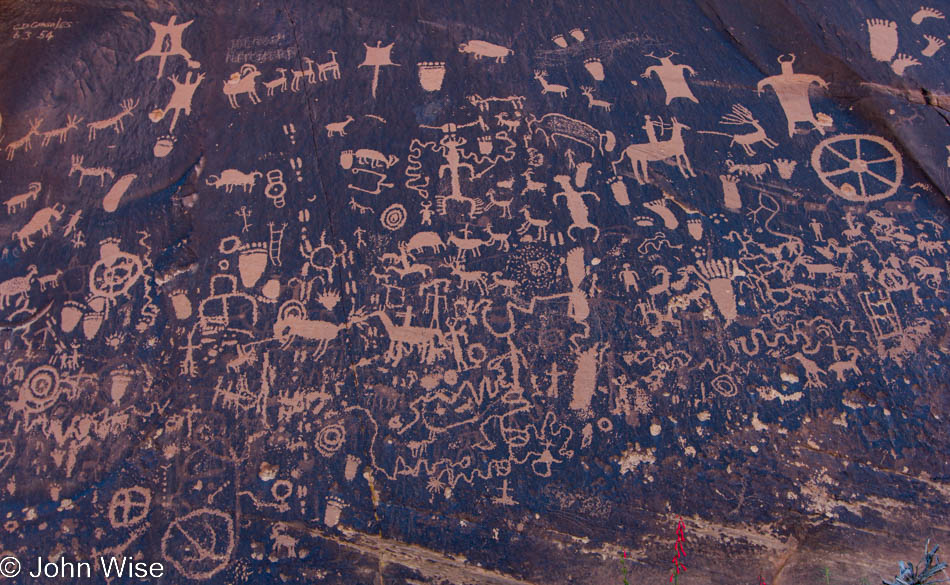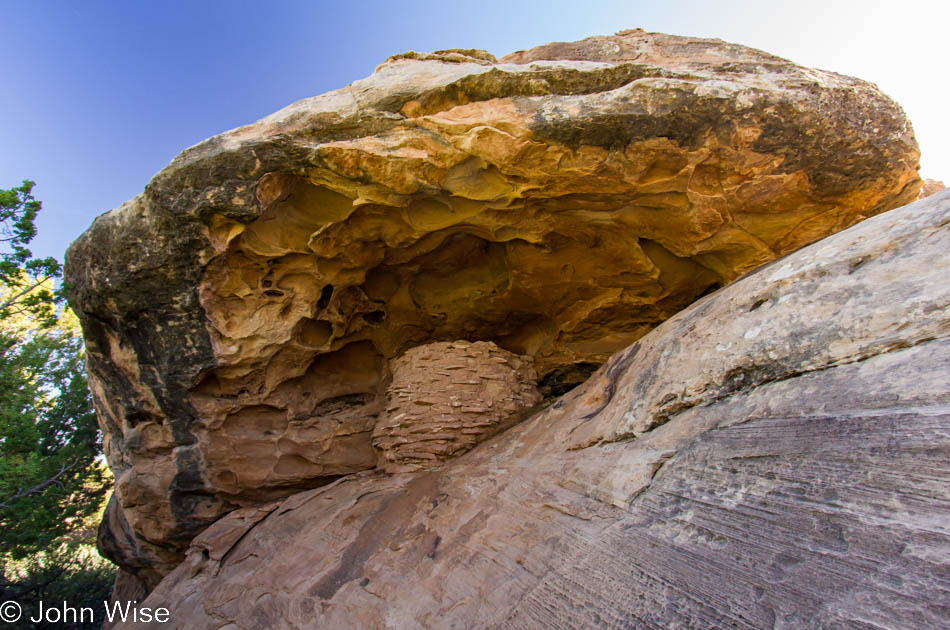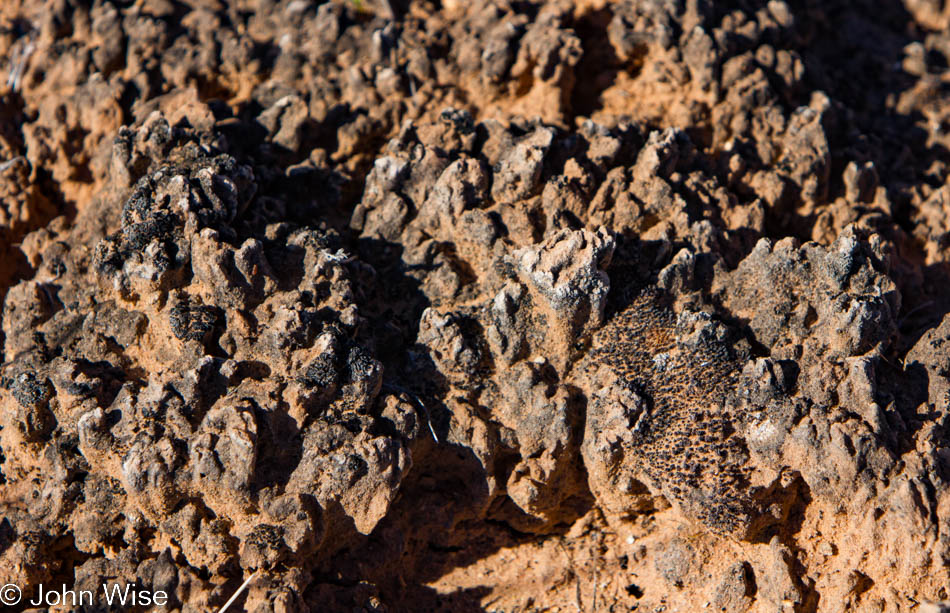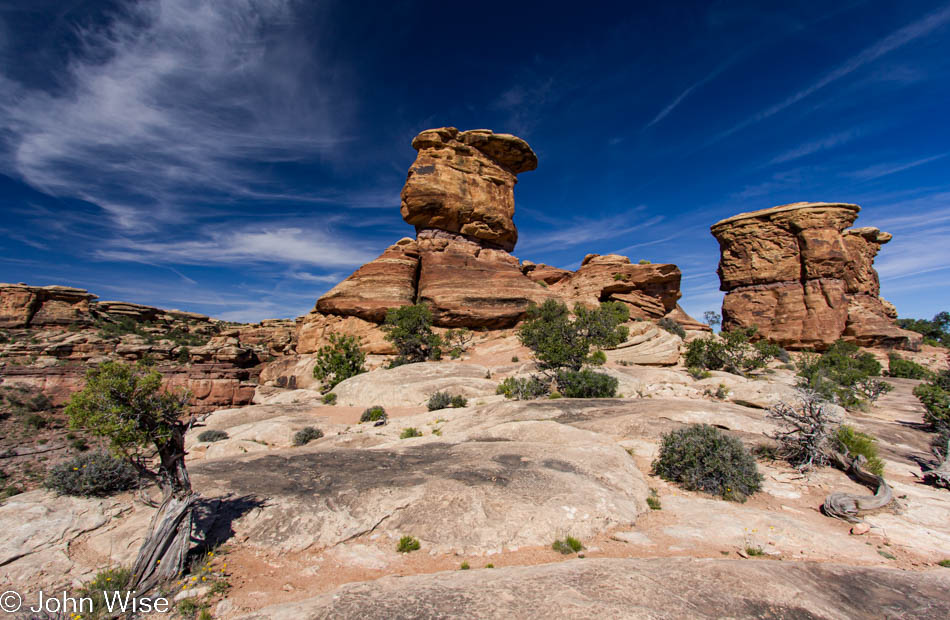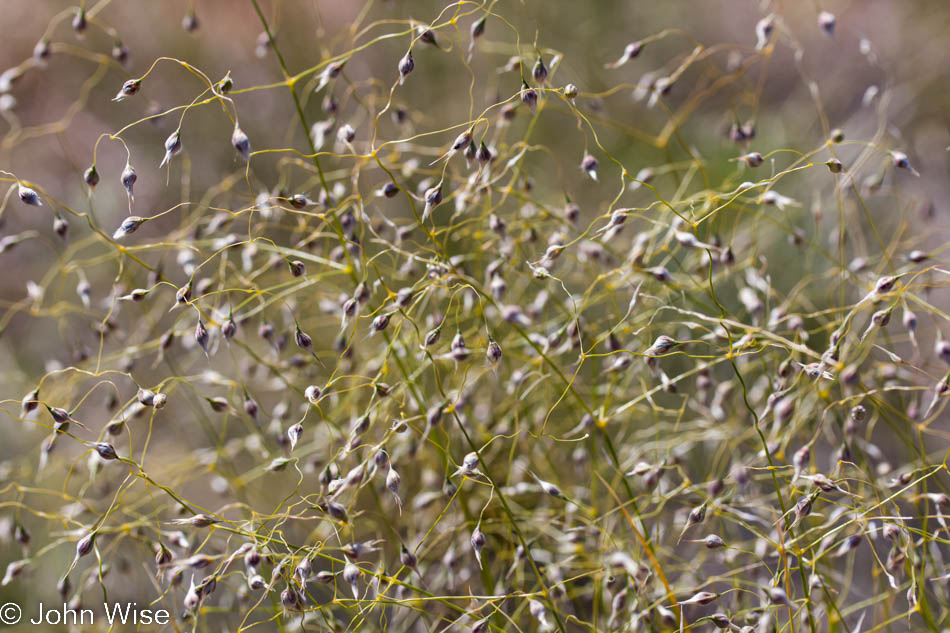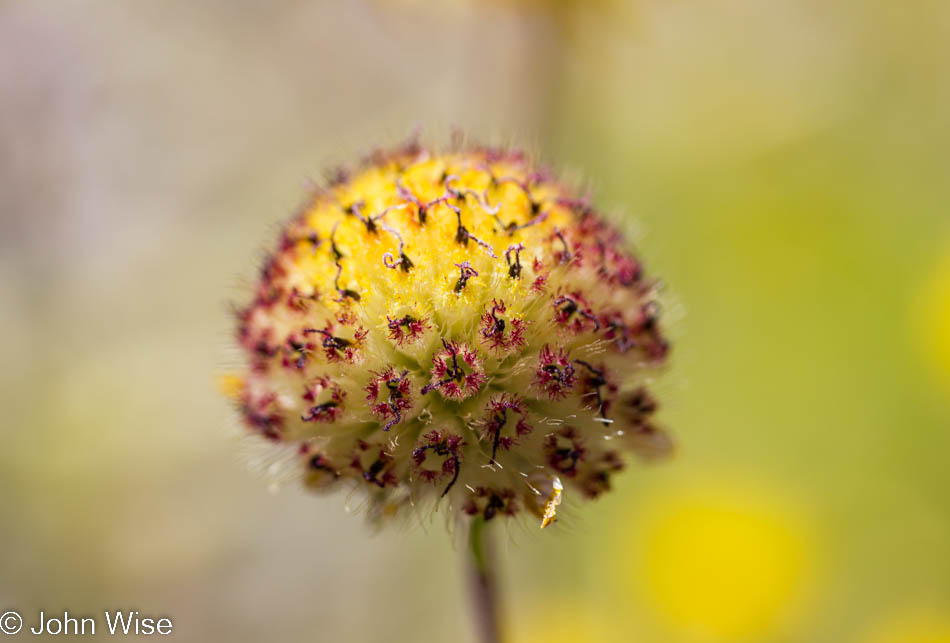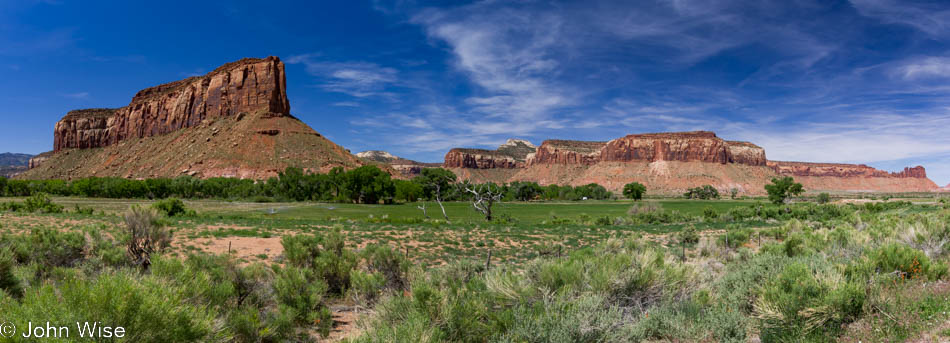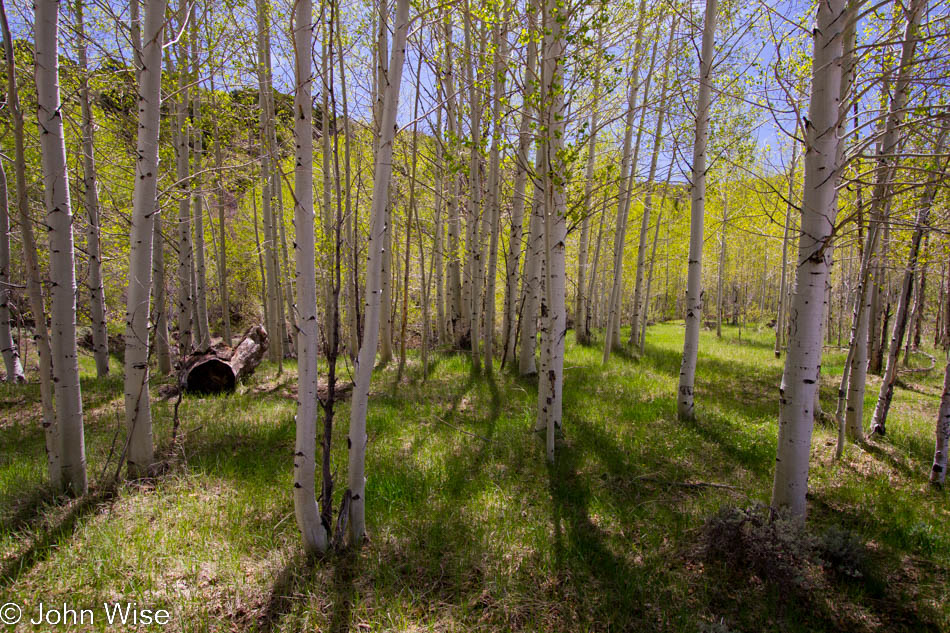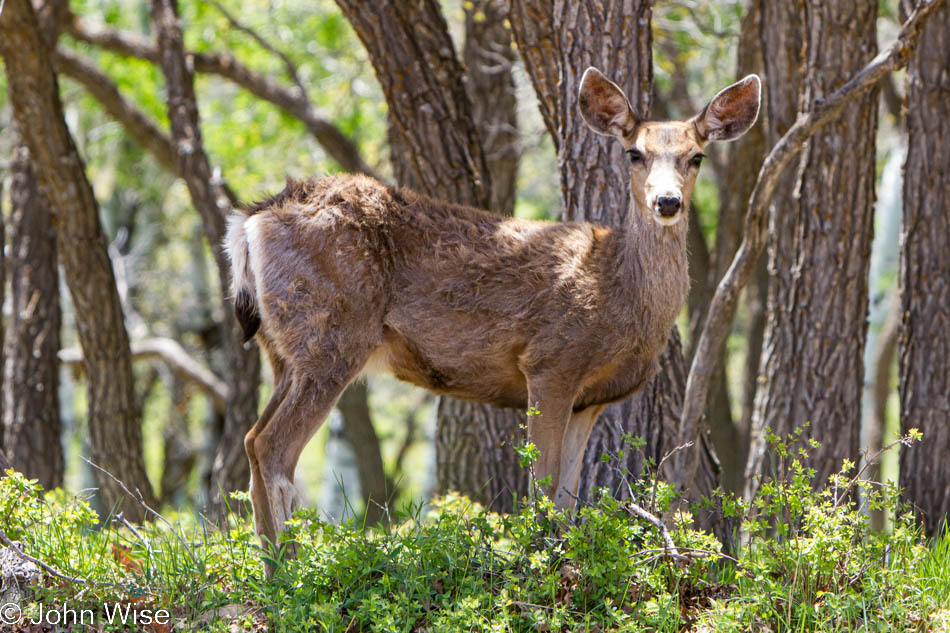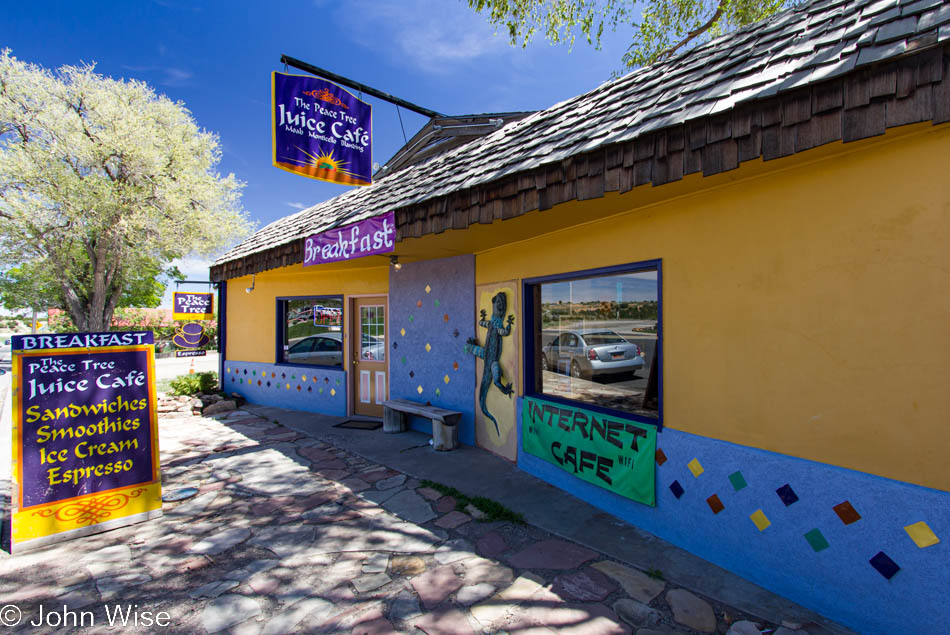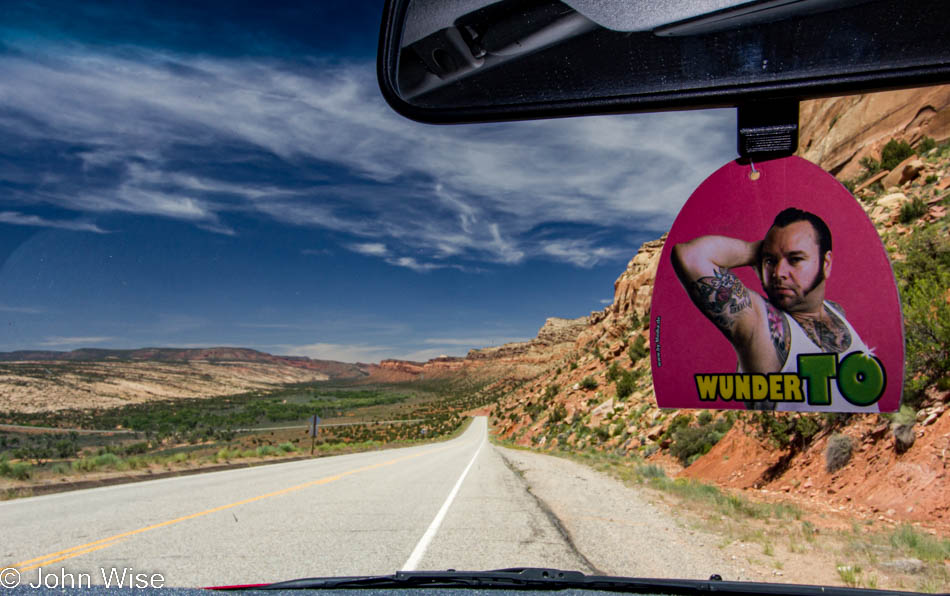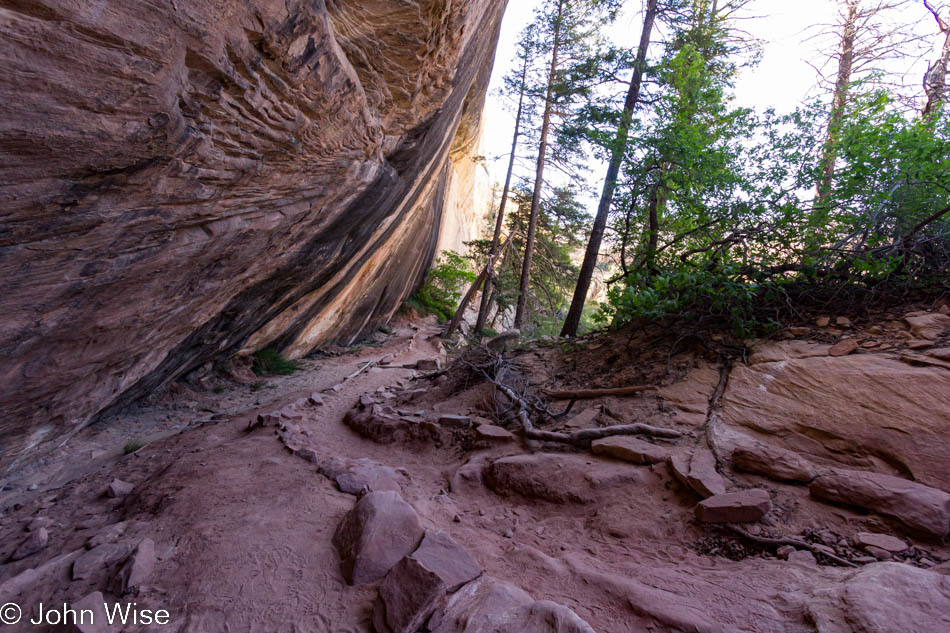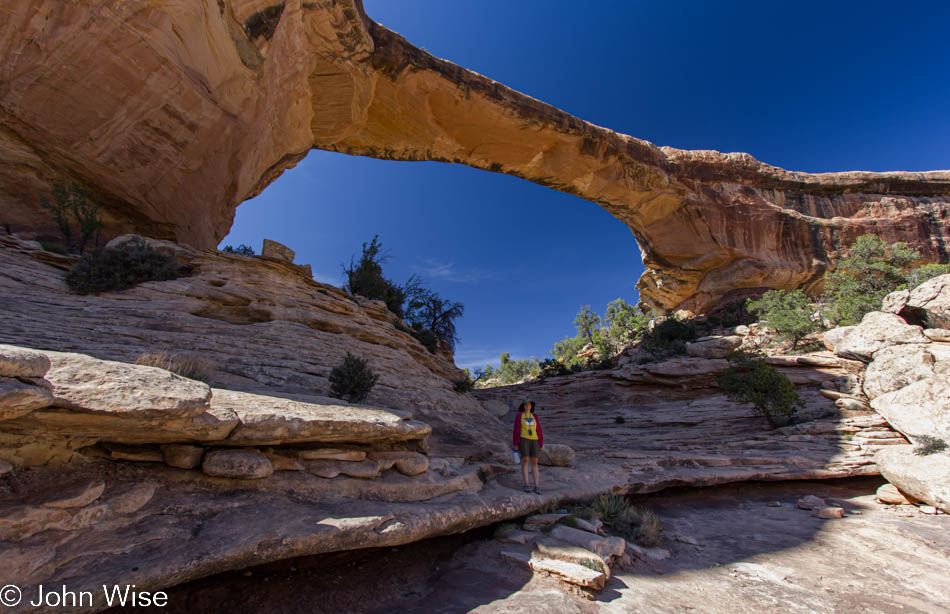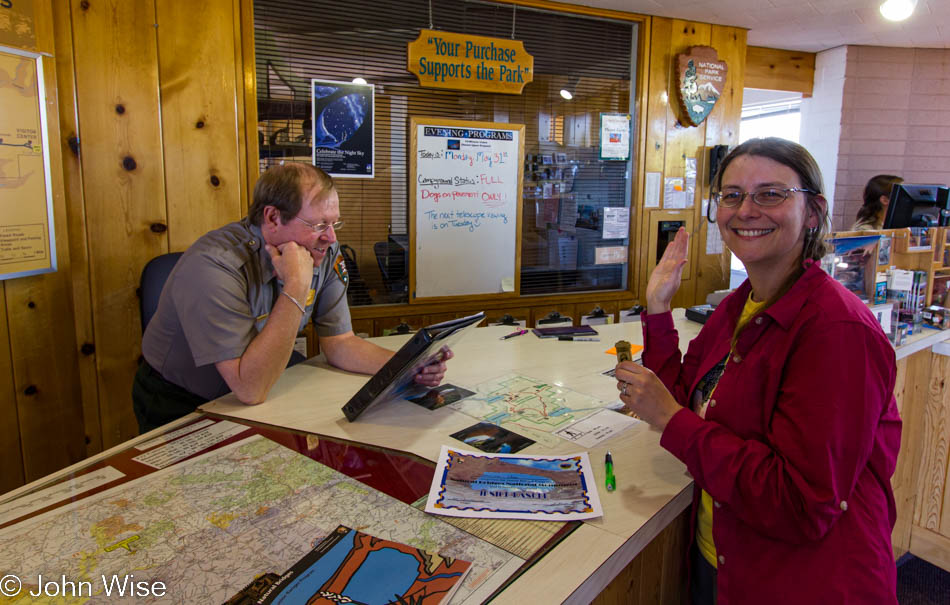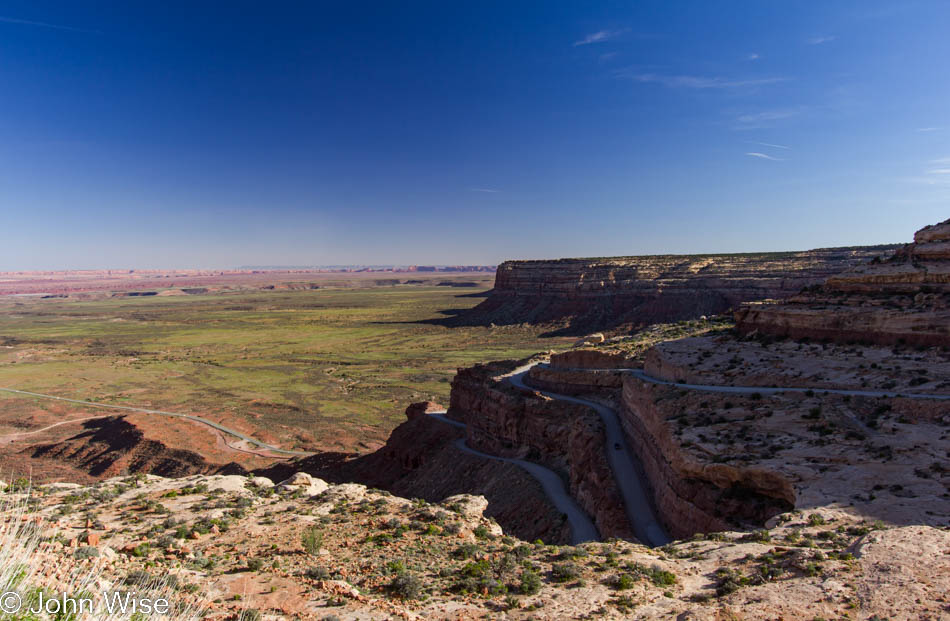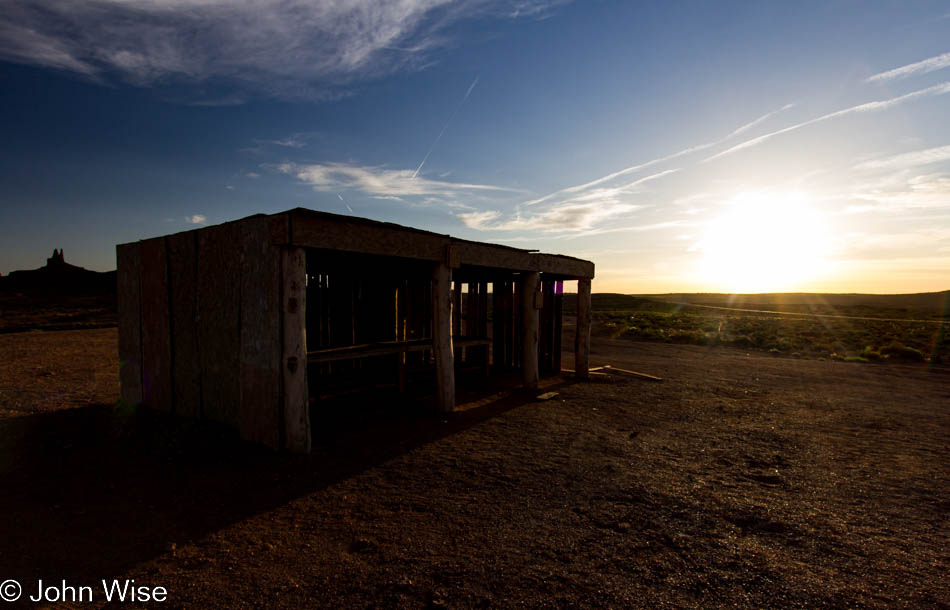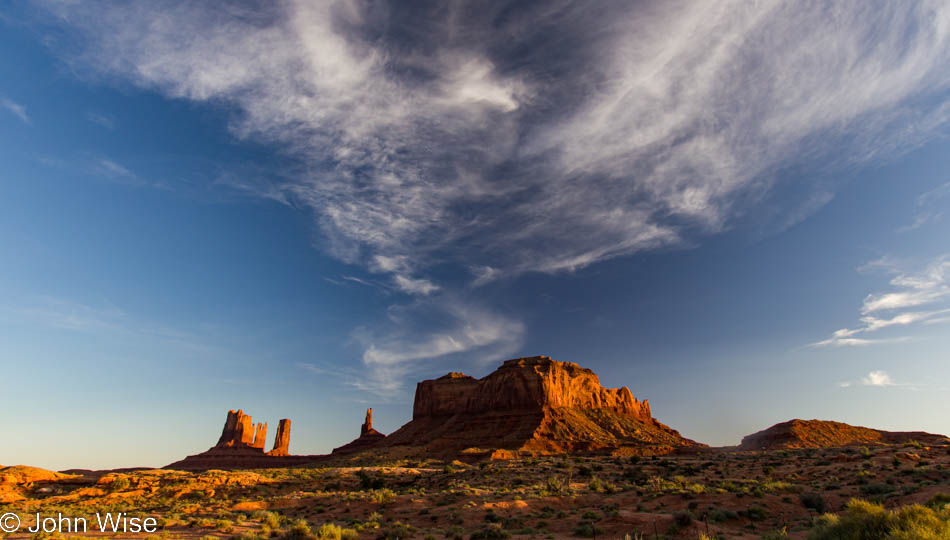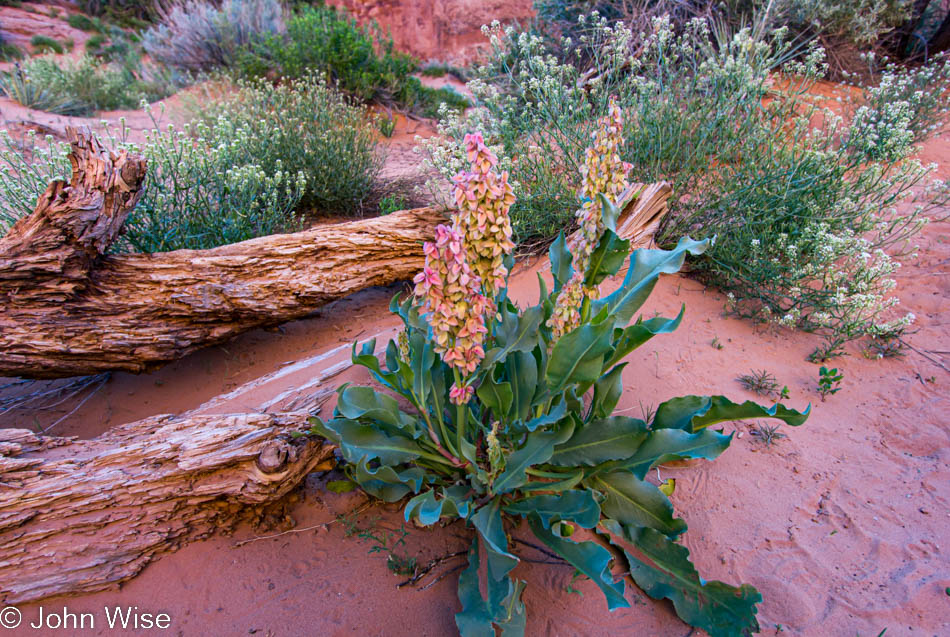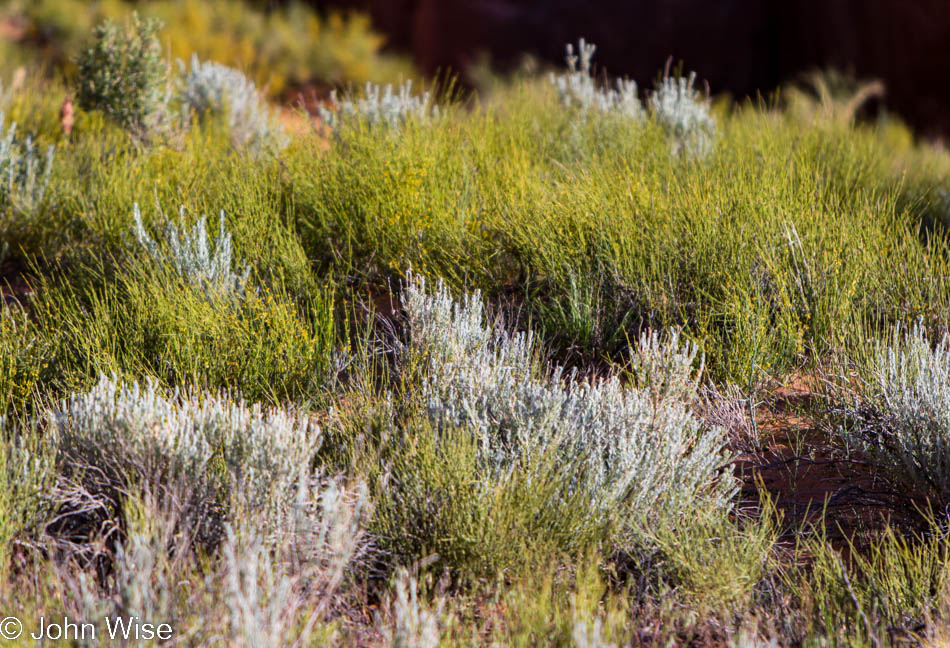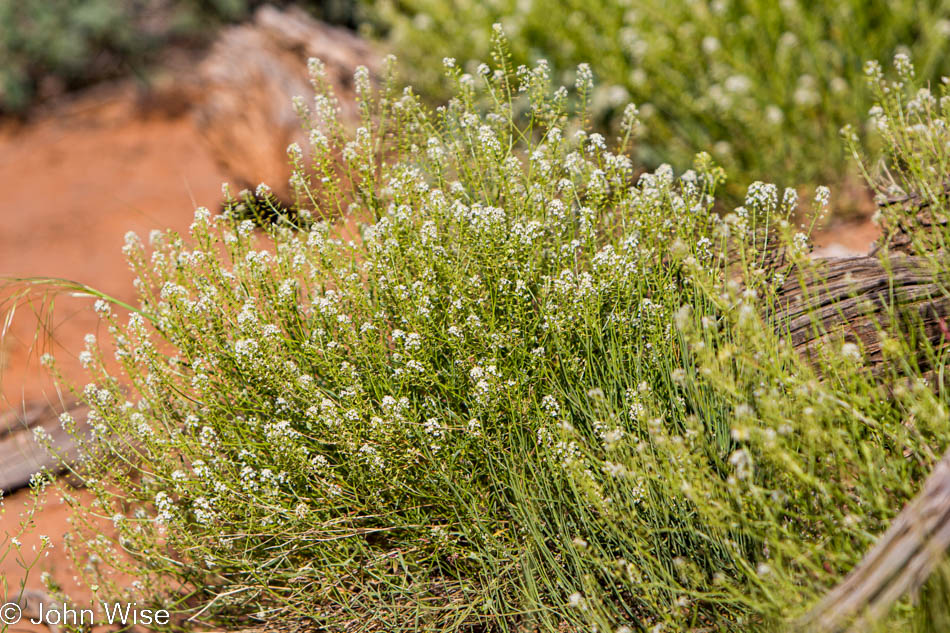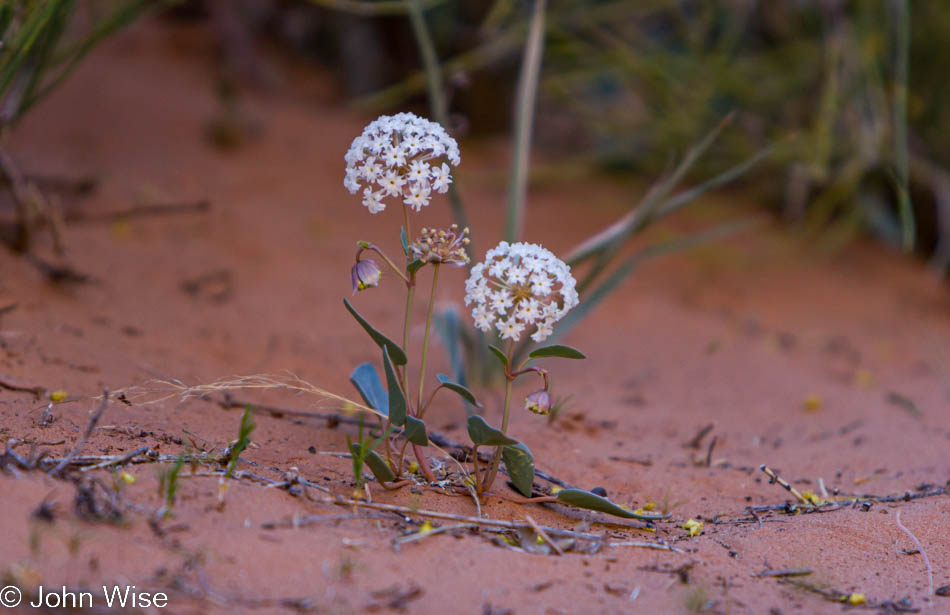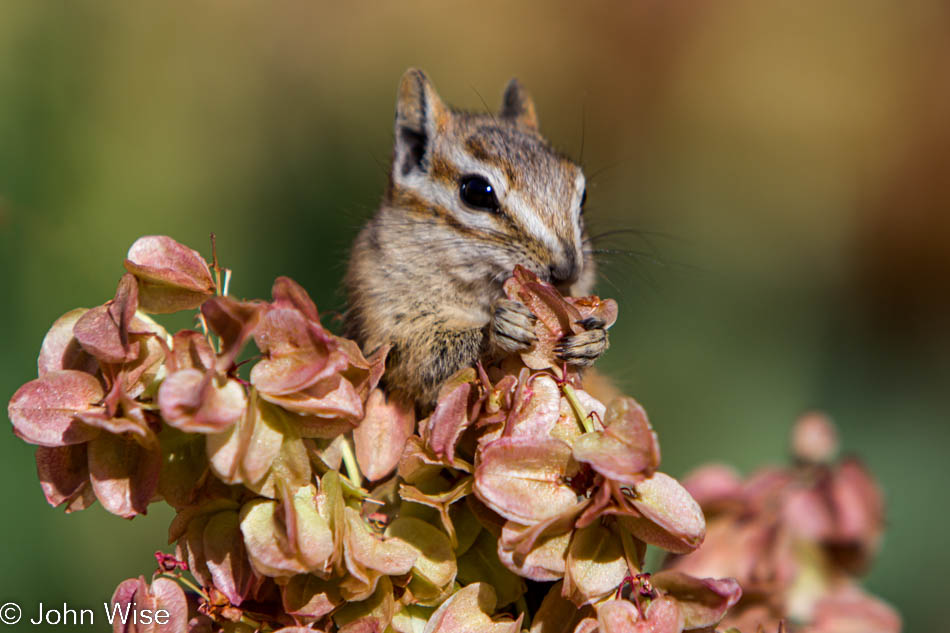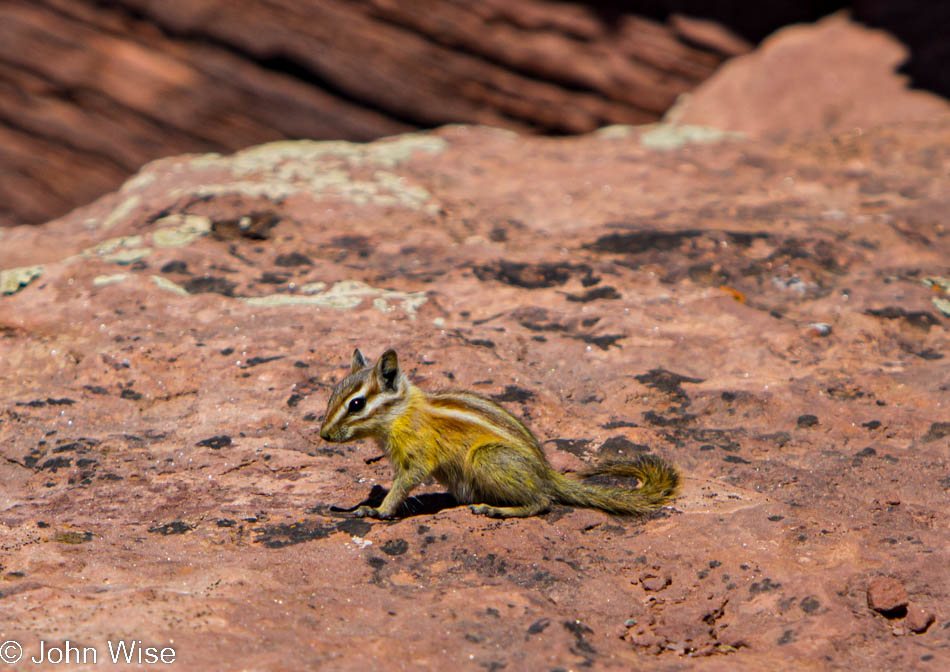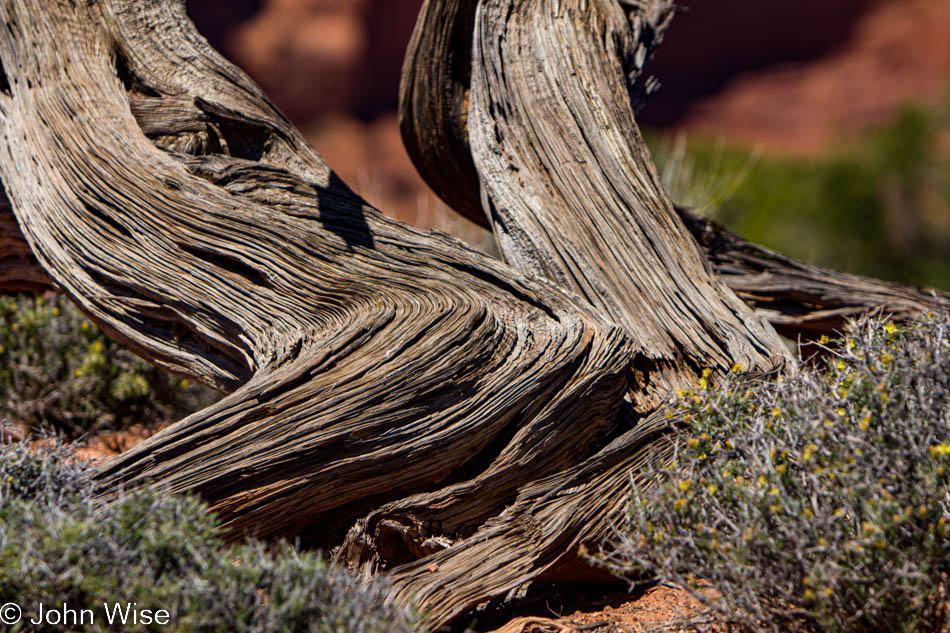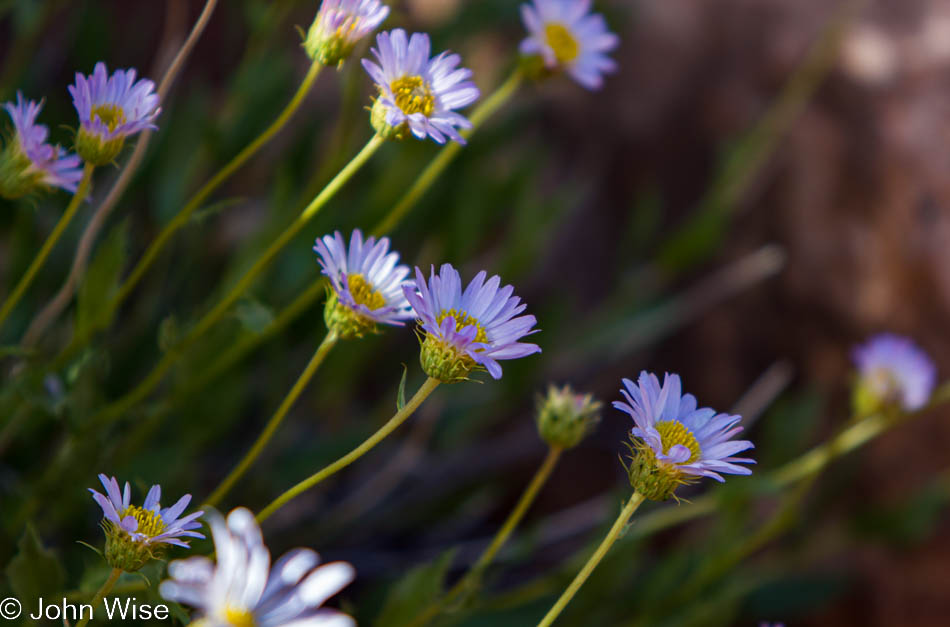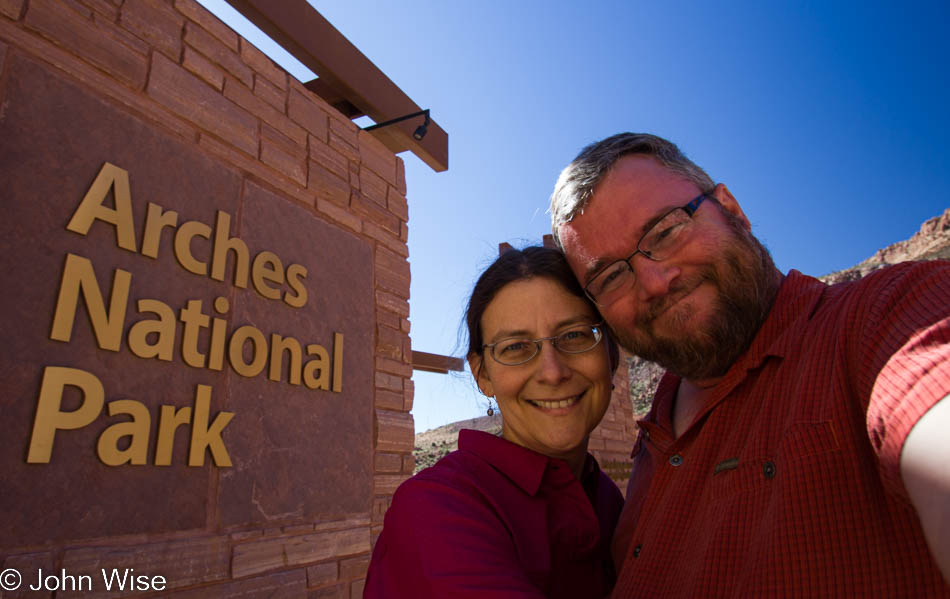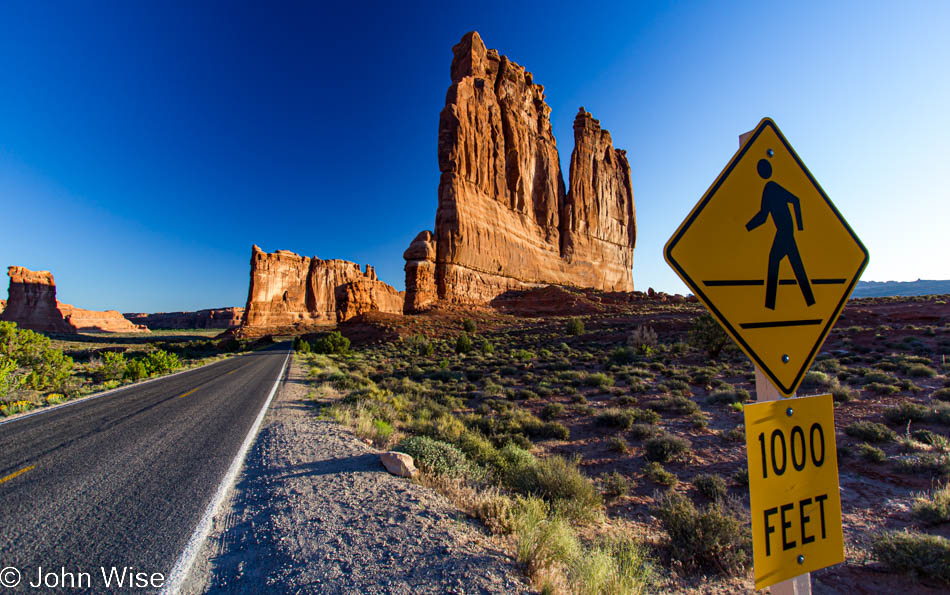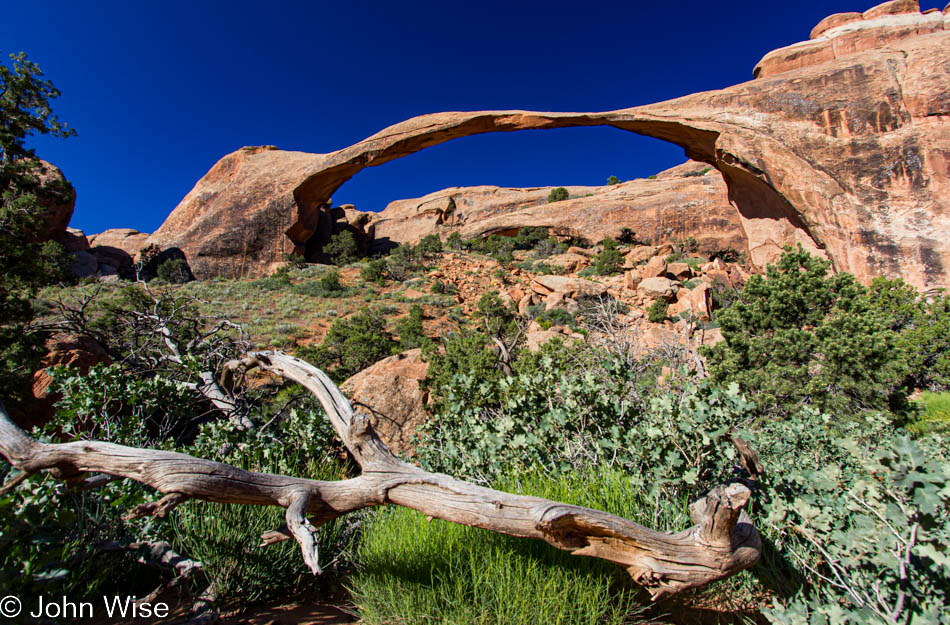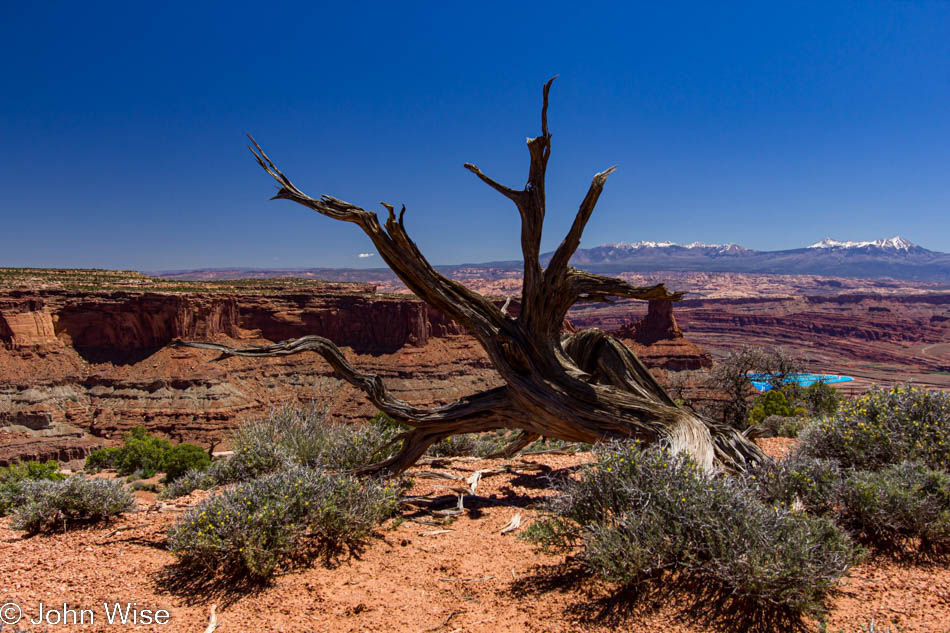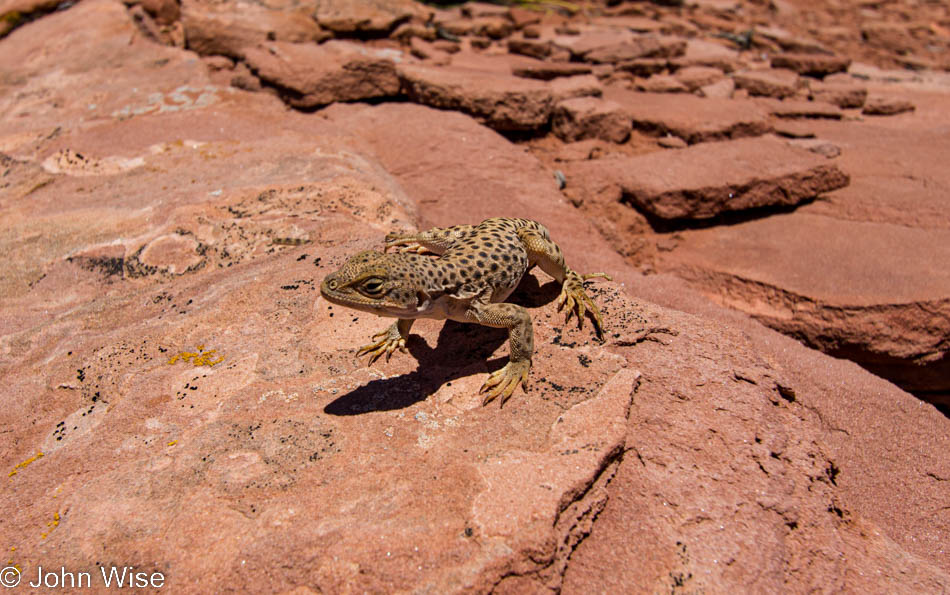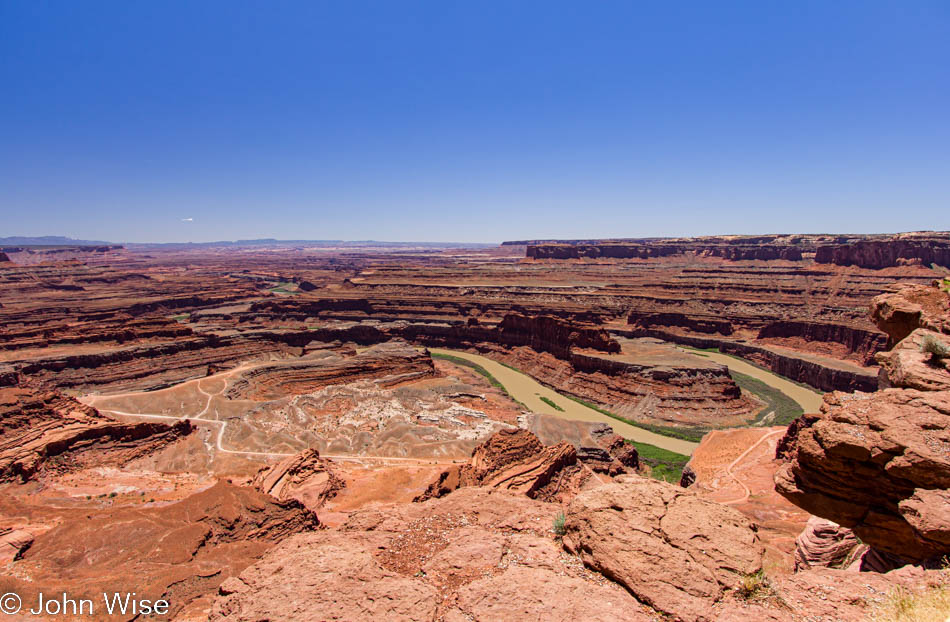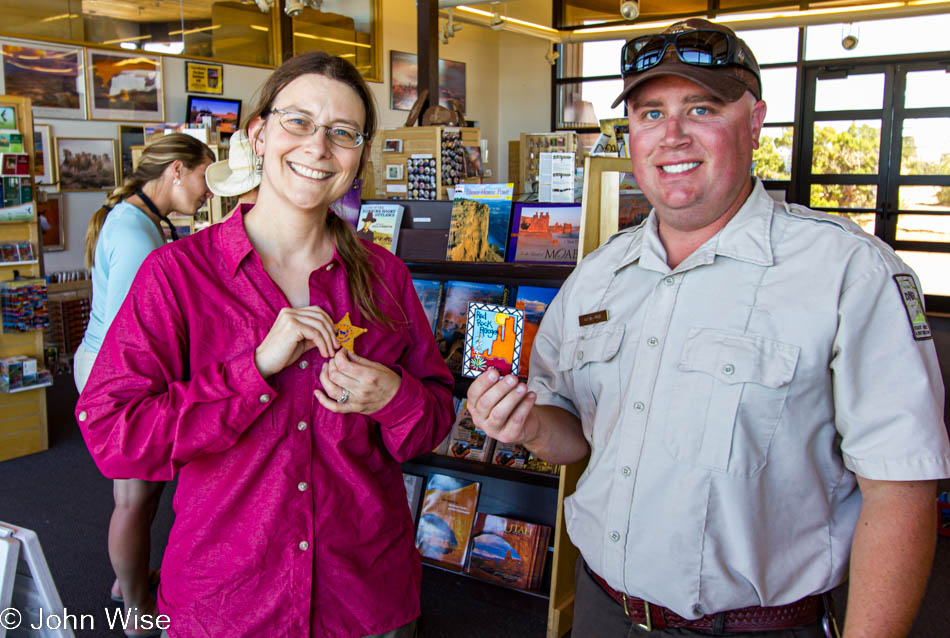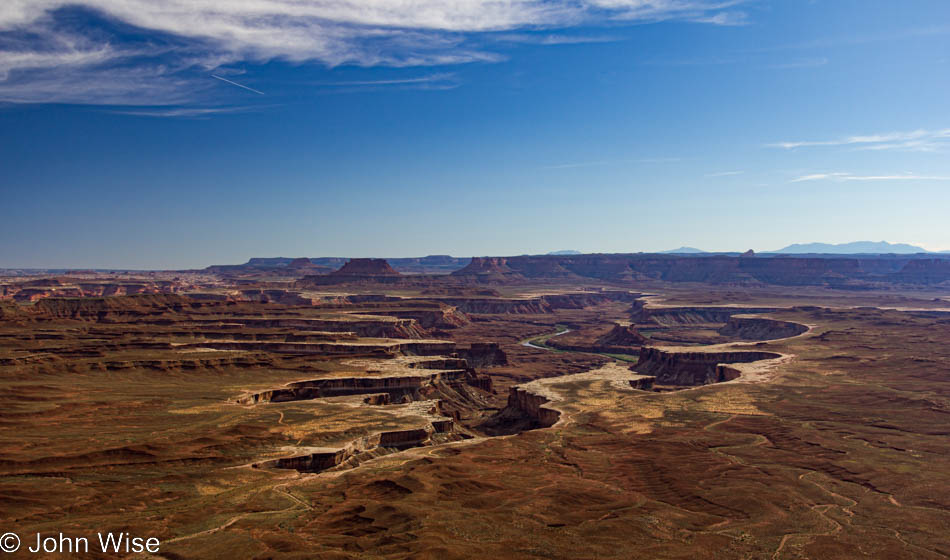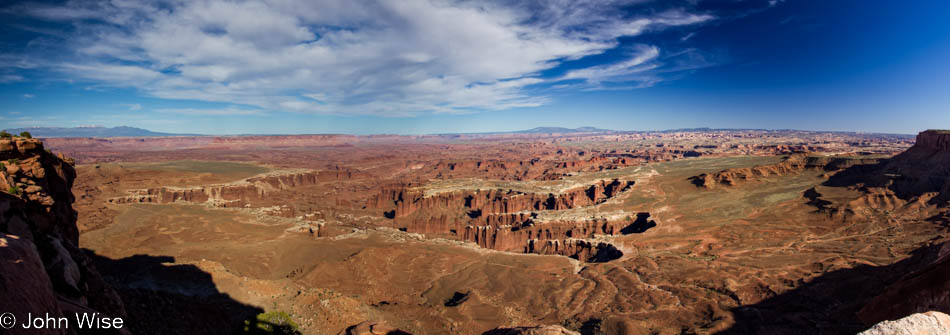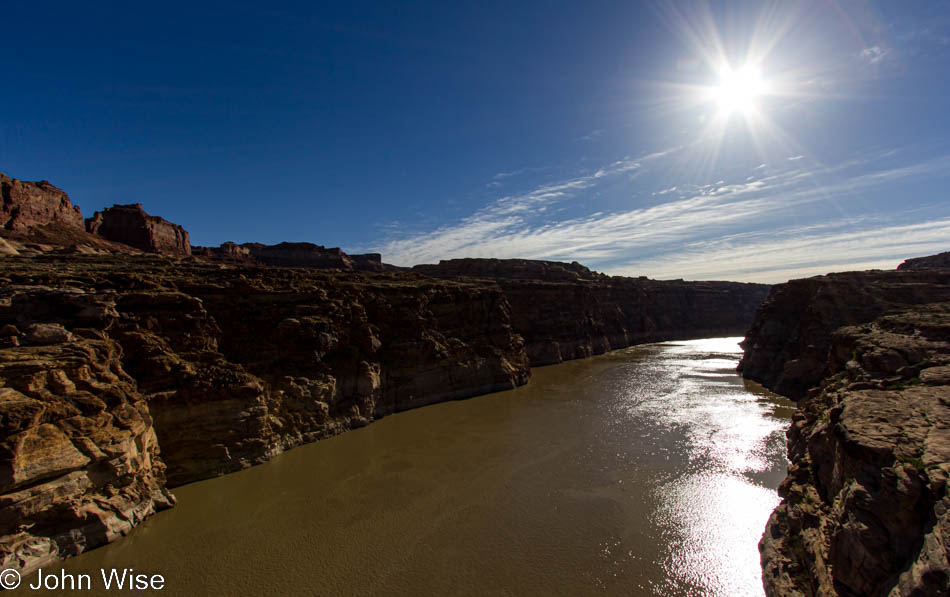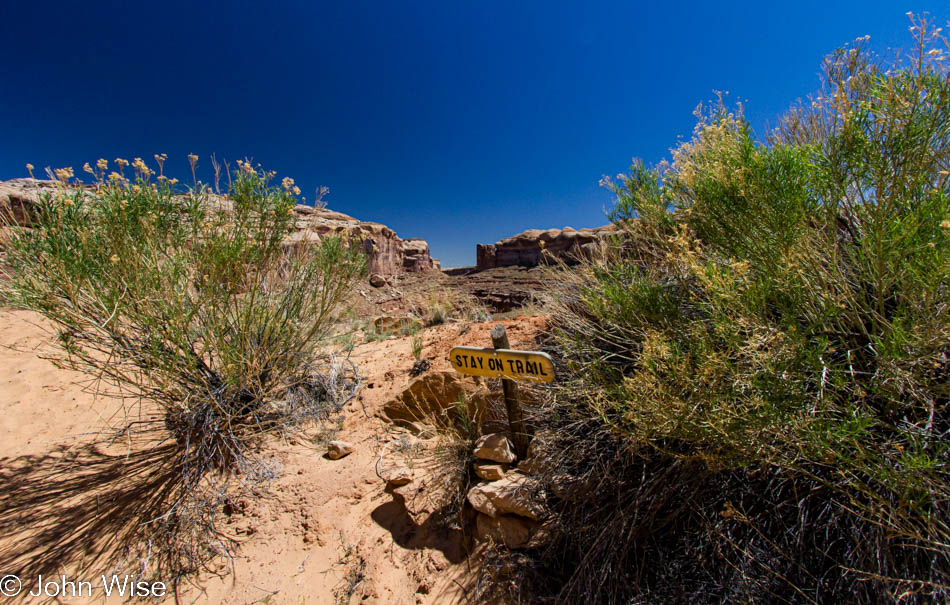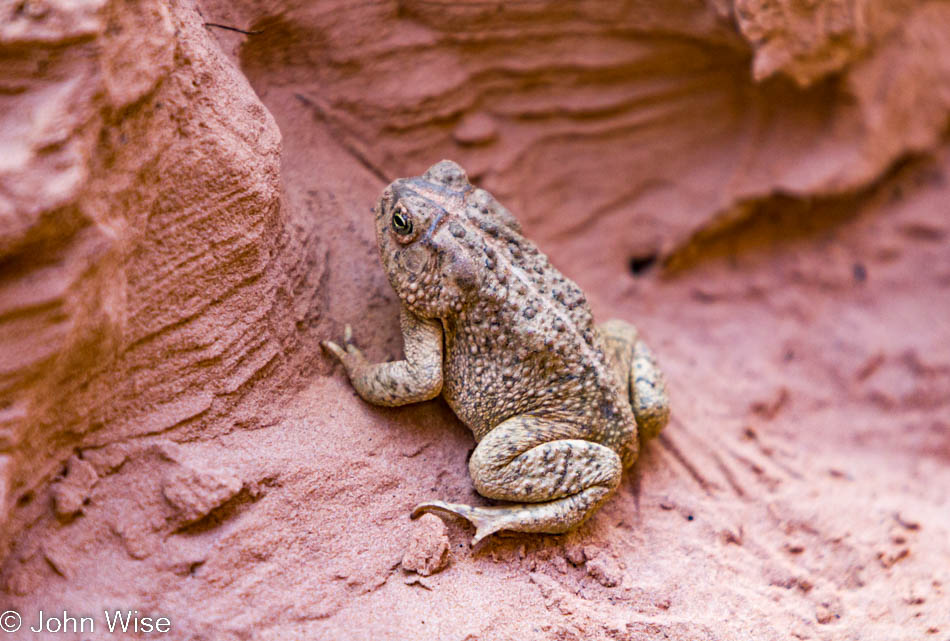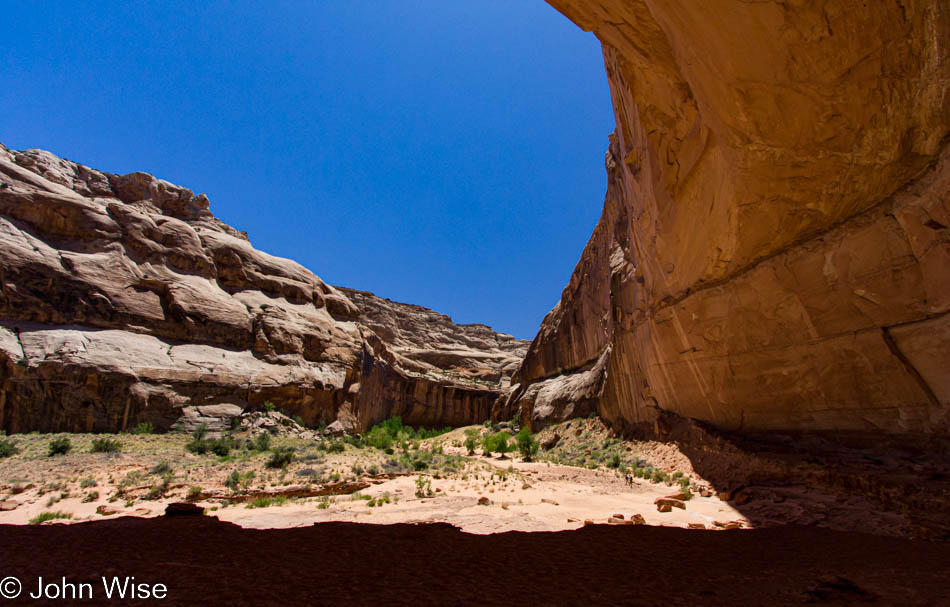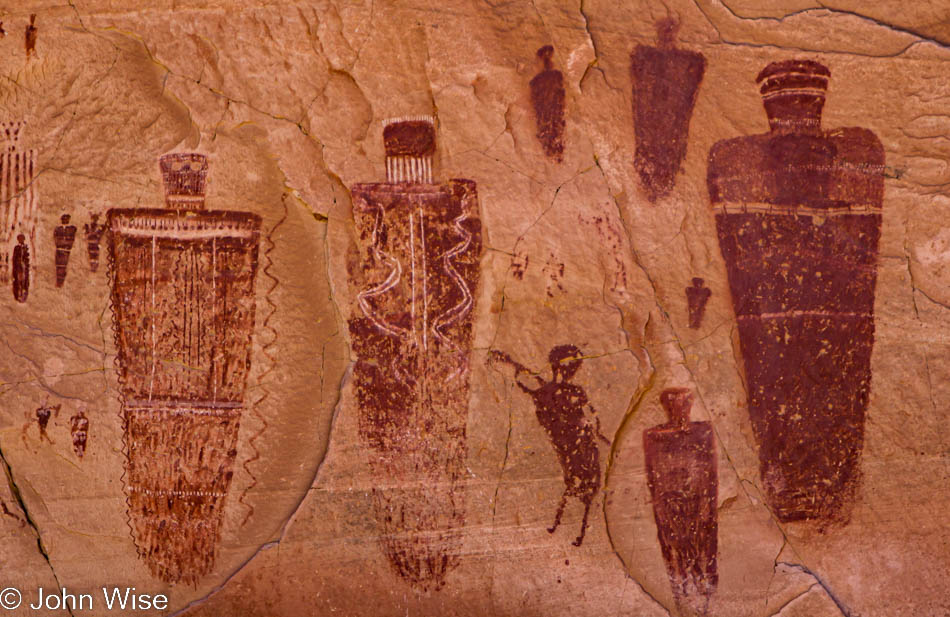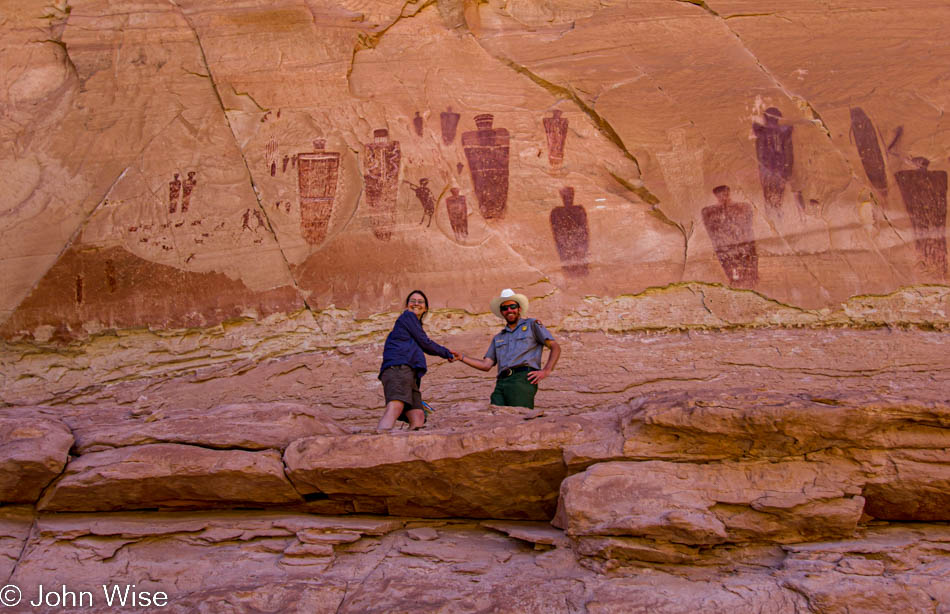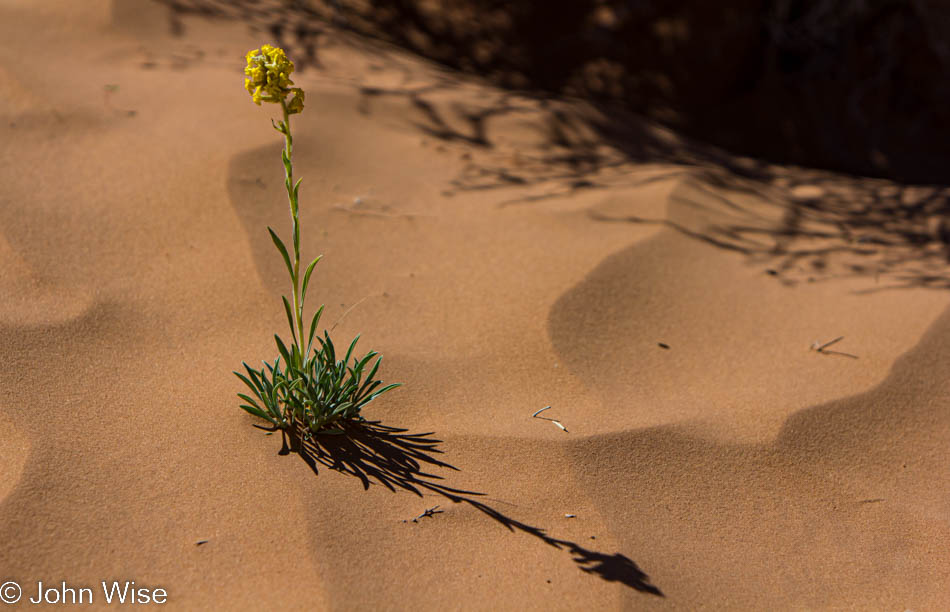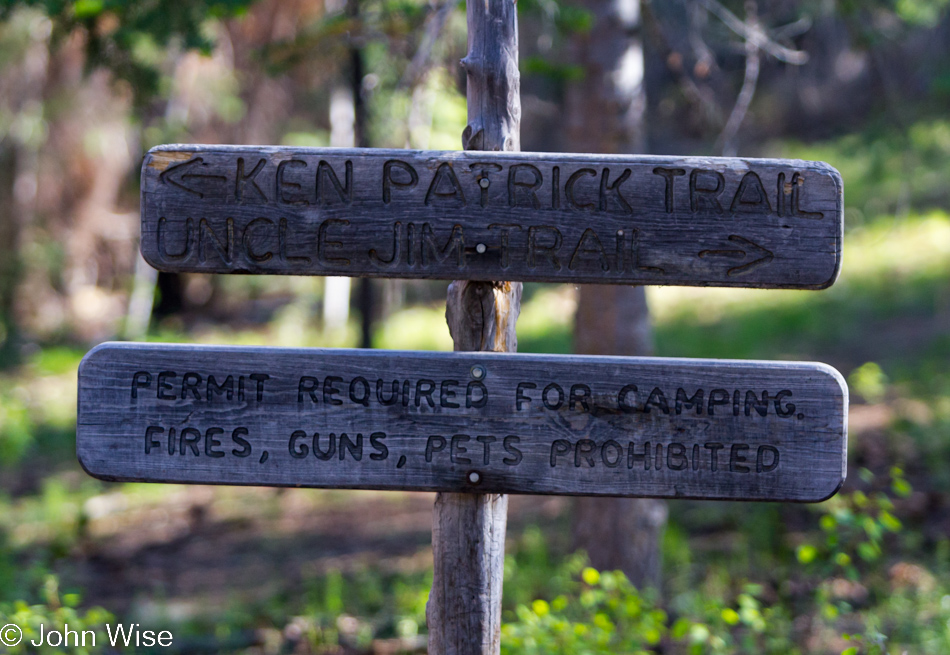
The last day of our trip up north, and we indulge ourselves by sleeping until 5:30. Since today is Sunday, we are assuming that others will be even slower than us and that by the time we arrive at today’s trailhead after driving south from Jacob Lake, we’ll still be early enough to beat the crowds. Our destination parking lot combines the launch point for those hiking the North Kaibab trail into the canyon with our trail that starts on the Ken Patrick Trail and continues on the Uncle Jim Trail. We are expecting a five-mile round trip. What we hadn’t bargained for nor came prepared for were the clouds of mosquitos that nearly turned me back more than once.
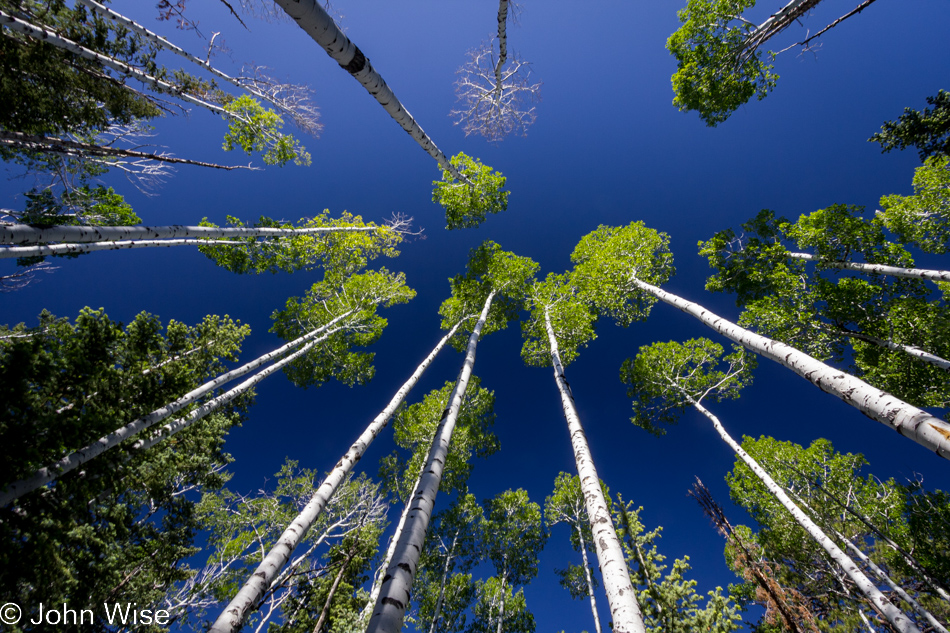
Those mosquitos were so thick I was close to panicking from time to time and started losing interest in taking photos.
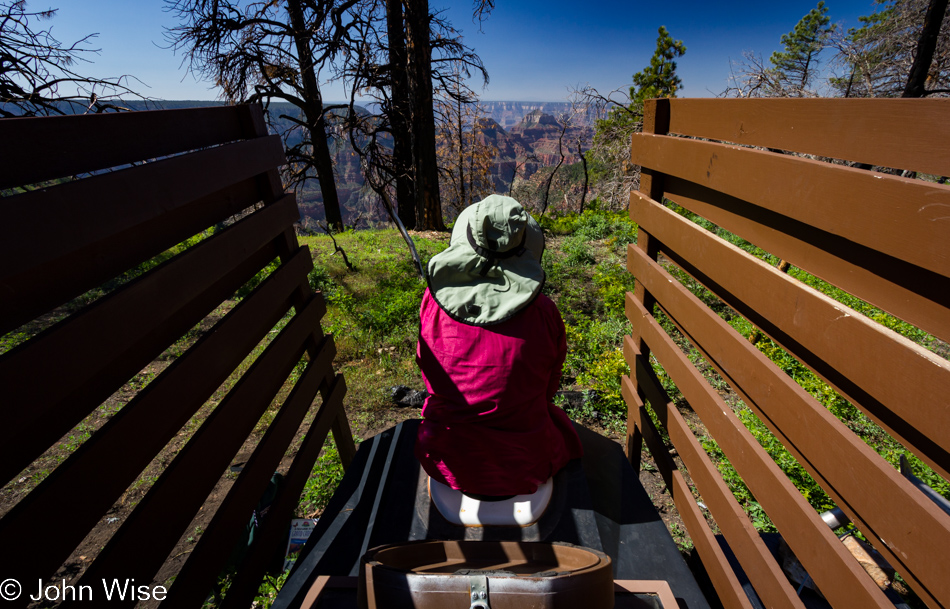
This picture should tell you why we chose the Uncle Jim Trail; we had heard about the best view from a toilet in the southwest, with this pit toilet facing the rim just feet from the precipice. Not while sitting there, Caroline got busy finishing the work required for her Grand Canyon Discovery patch, at least out here on the rim with the wind blowing; the mosquitos were kept at bay. After nearly an hour of inspecting plants and bugs and reveling in the view, we began the hike back. The backside of the loop trail was halfway decent in regards to the mosquitos, but when we reached the point where the trail had forked, they were waiting for us. We ran the gauntlet and almost escaped unscathed.
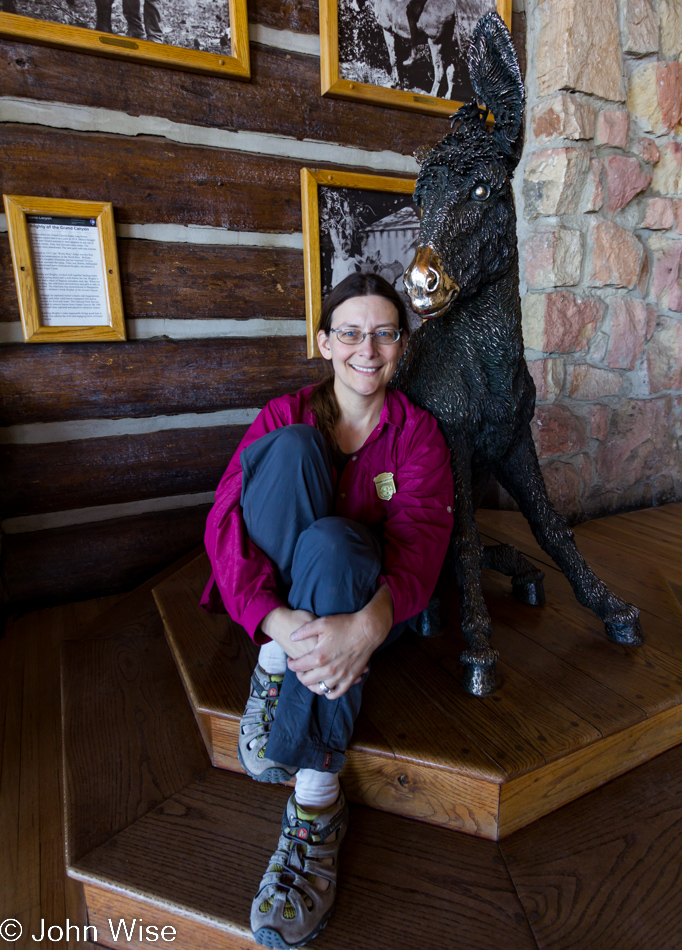
Caroline with Brighty the Donkey, who has quite a shiny nose.
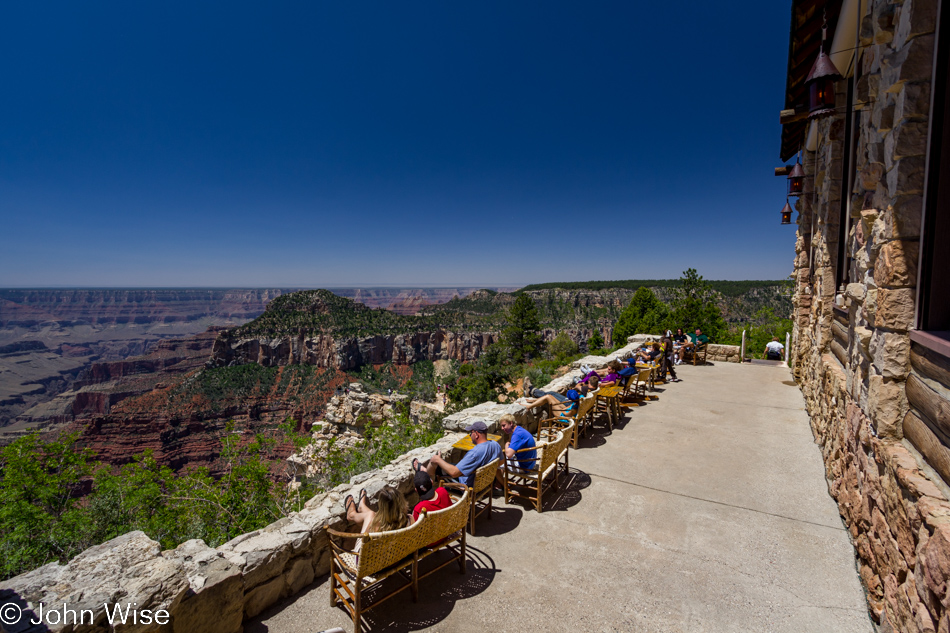
With some essay work waiting to be completed, we sat at the rim’s edge of the lodge while Caroline finished the details, and we awaited the opening of the dining room for lunch. Over lunch, we met Joe Evans of New York City, who divides his time between traveling America and volunteering on the Thai/Burmese border, helping refugees learn self-sustainability. It often happens that we meet some of the more interesting people when we ourselves are traveling. After lunch, we went back over to the visitor center for Caroline to collect her Discovery patch, and with that, the car was pointed toward home.
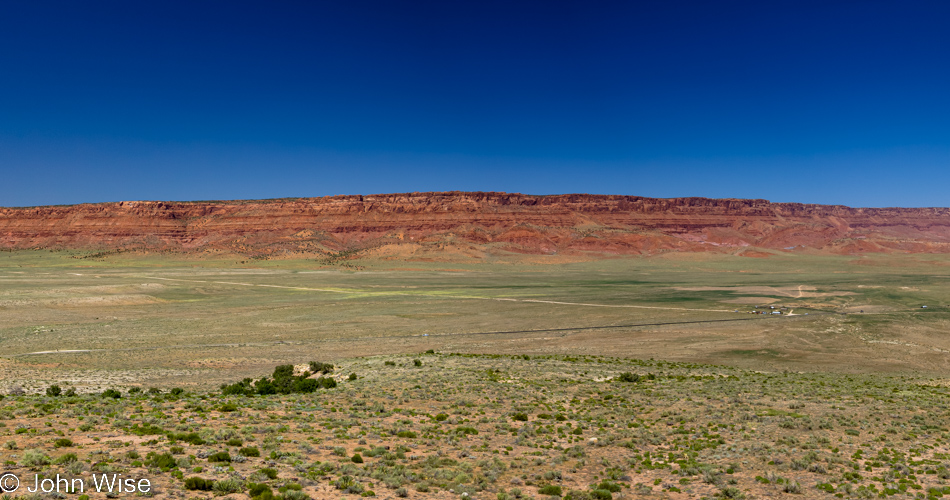
Leaving the north rim traveling east, this overview might be one of the best in the entire state.
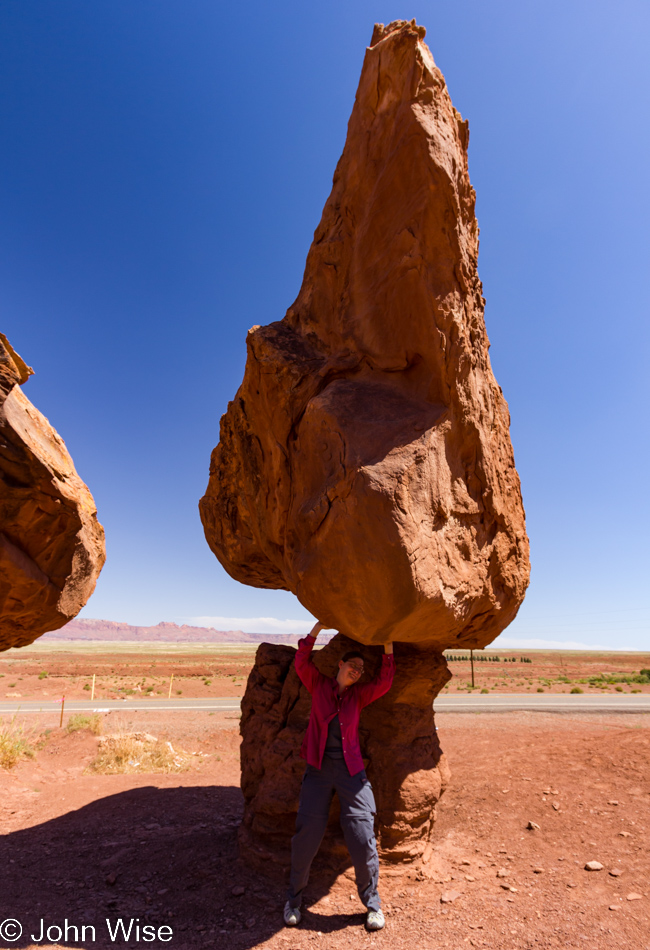
She was certain that she’d be able to lift this boulder off its puny pedestal and set it right back down; lucky for us, it didn’t just fall and crush her.
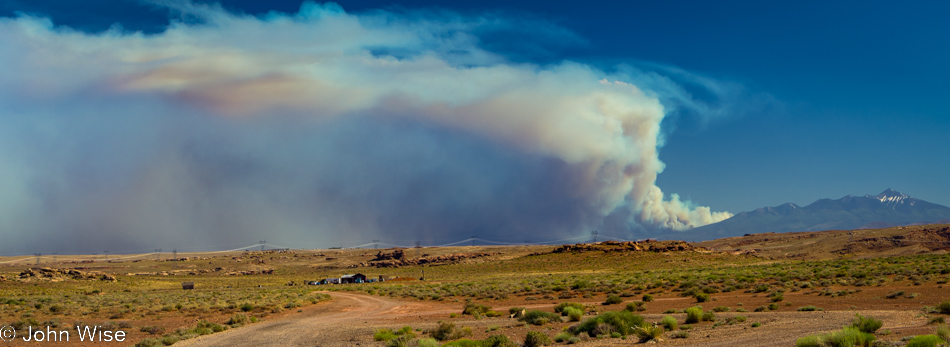
Back through Jacob Lake, the windy roads, past Vermillion Cliffs, and over the Colorado River via the Navajo Bridge. Going south on the 89, we can see the smoke off in the distance and are desperately trying to figure out where it’s coming from. We scan the radio stations looking for a clue, no signs are posted about detours, so we continue going south. Then, just minutes before reaching Cameron, a station starts to tune in from Flagstaff; the 89 is closed near Sunset Crater north of Flagstaff. We ask ourselves once, what is the likelihood that we will be detoured right back up here? We decided on a Rim-to-Rim visit.
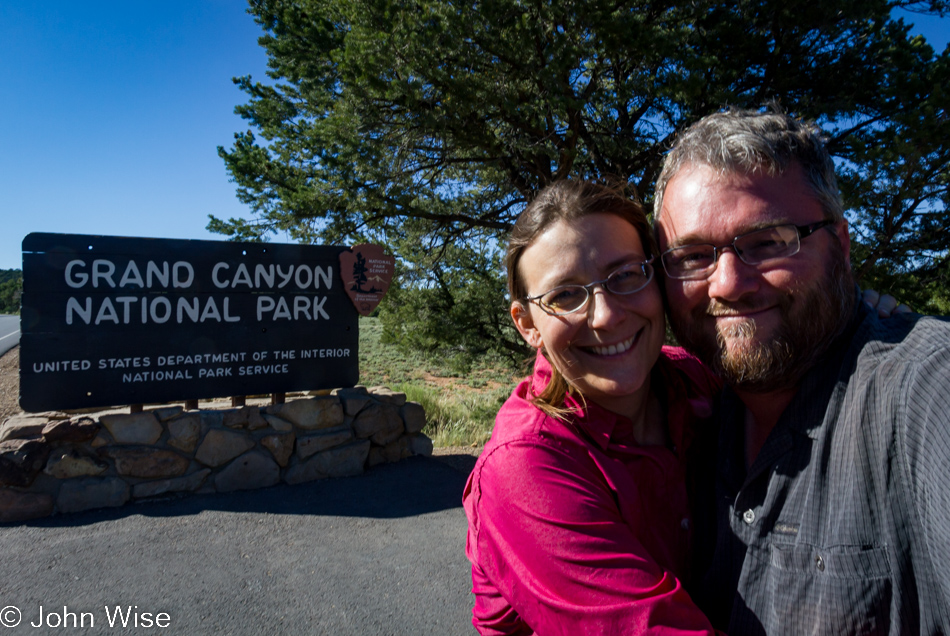
We turn west on the 64 and are soon entering the south rim of the Grand Canyon – this is the first time we have visited both the north and the south rim of the canyon in a single day. While some people take the easy route and simply hike across, we took the long way and drove the 210 miles from rim to rim. At the entry station, the rangers hadn’t heard about the closure yet, but by the time we arrived at the Tusayan entry station, it was obvious from the mass of cars in line on a late Sunday afternoon with many pulling boats that probably were on their way to Lake Powell that they had been turned away from the road closure on the 89 and detoured through the canyon. Relieved, we felt like we had made the right decision.

While we are excited to be at the south rim, we also want to get home, and this two-hour detour isn’t helping us get there any quicker. But we can’t just drive through so we decide to stop at the Desert View Watch Tower. The view of the Colorado River below is a favorite, and the tower, designed by Mary Colter 78 years ago, is as amazing today as it must have been back then.
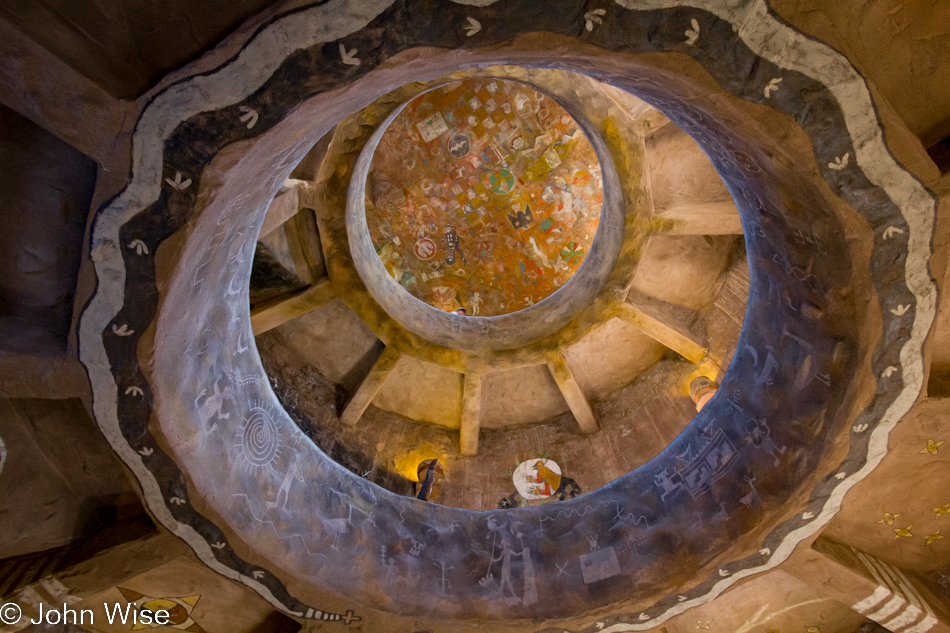
Of the building Mary Colter designed, we have been to Hermit’s Rest, the Hopi House, and the Watch Tower; we have stayed at the Bright Angel Lodge, and in October, we will visit Phantom Ranch at the bottom of the Grand Canyon. Strange enough, we have never stayed at La Posada, the luxury hotel she designed in Winslow, Arizona.
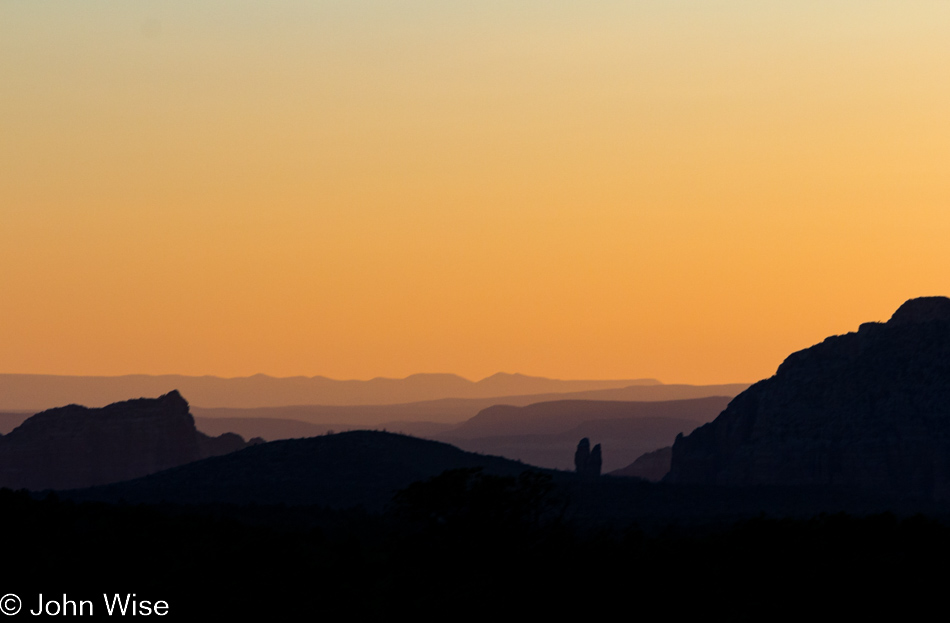
We continued south through Tusayan and connected with Interstate 40 in Williams. On the other side of Flagstaff, we got a great view of the thunderously large billowy clouds rising from the fire. But just wanted to find the 17 freeway so we could go home, no time for forest fire tourism. The sky was bright orange as we drove past the red rock country of Sedona to our west; it would be full of stars by the time we got home. Starbucks in Cottonwood is a great midpoint pit-stop to find a pick-me-up cup of coffee. The rest of the drive was one of those long, boring hauls through Black Canyon in the dark we have made once too often.
